Instead of hiking to Maccu Picchu with the masses, we decided to hike to the lesser known Incan site of Choquequirao (often described as the Sister City to Maccu Picchu), after we received several recommendations from fellow cycle tourers. Hiking the Inca Trail requires you to book ahead, often months in advance, and obtain an Inca Trail Permit. This can be difficult for cycle tourers, like us, who are unsure exactly when they will arrive in Peru, let alone, Cusco! So for us, visiting Maccu Picchu by train, combined with a 4 day hike to Choquequirao was the perfect compromise!
If you decide to do this hike, don’t forget insect repellent, sunscreen and a hat! Hiking poles are a good idea too.
Arriving in Cachora (by taxi from Abancay)
You can easily cycle to Cachora, although be aware that the approximately 14km ride from the main highway to Cachora is unpaved and very rocky. We were meeting a friend in Cusco, so we didn’t have enough time to cycle from Abancay to Cachora, so we got a taxi from Abancay for 50 soles (our bikes were strapped onto the roof of the taxi). We weren’t too disappointed to miss out on riding this stretch as there was quite a bit of traffic on the road, as well as a very big climb out of Abancay!
Cachora is a charming little town. There were a number of accommodation options (in various price ranges), but we decided on Hospedaje Apu Salkantay (near the Plaza de Armas) where we got a double room for 35 soles. This was a great place to stay for cycle tourers, as they let us leave our bikes and panniers in a locked storage room and although they didn’t have a guest kitchen, they let us cook in the garden.
After finding somewhere to stay, our next task was to organize our trek. After carrying heavy backpacks for the Santa Cruz trek in the Cordillera Blancas, we decided to invest in a mule, as we understood from a friend that the hike would be very steep and hard on the knees (he was not wrong!). We asked around for mule hire and were directed to “Doris”. Her house is on the corner of the Plaza de Armas. Doris was fantastic and we organized everything for the trek through her. We even got our laundry done through her at the end of the trek!
We paid:
- 35 soles for the mule per day;
- 40 soles for the Arriero (mule boy) per day (it isn’t possible to hire the mule without an Arriero);
- plus an additional 10 soles for food for the Arriero (mule boy) per day,
in total, 85 soles per day (USD 25) for the mule and Arriero.
If you are on a tight budget, you can share your food with the Arriero, rather than pay an additional 10 soles per day, but we found it much easier to just pay the additional money and let the Arriero organize his own food. Also our cooking equipment is made for 2 portions – and we didn’t want to cook a complete extra meal. Our Arriero, Michel, ate all of his meals in little restaurants along the way, but we shared our chocolate and other snacks with him.
We also hired hiking poles for the trek from Doris at 5 soles per set per day (in total 40 soles for 4 days for 2 sets, but we got a discount to 30 soles). They certainly weren’t the best hiking poles, but they did the job and I was very glad to have them.
One of the best things about hiring a mule was that we didn’t need to hire additional backpacks. We simply used 1 of our Ortlieb panniers and our 2 Ortlieb rack packs. Perfect!
We had bought most of our food for the trek in Abancay, but we still needed to buy a couple of extra food items. There are a number of little shops in Cachora where you can buy all of the food that you need for the trek at reasonable prices.
Our hostal in Cachora, Hospedaje Apu Salkantay
Our hostal in Cachora, Hospedaje Apu Salkantay
Sunset over Cachora
Day 1 of the Trek: Cachora to Santa Rosa Alta Camp
We had arranged to start the hike at 6am and were at Doris’ house at 6am sharp. Unfortunately, the Arriero (Michel) was running late and we had to wait while he had breakfast and packed the mule with our bags. We didn’t end up leaving Doris’ house until 7.30am. This was quite late given how hot it became in the valley. In hindsight, we really should have just started the hike on our own and left our bags with Doris. The path is reasonably well sign posted and we really didn’t need Michel to show us where to go.
We had both opted for long sleeved tops for sun, and insect, protection. We carried day packs with the essentials: camera, food, water, sunscreen, bug spray and money.
Leaving Cachora, the first part of the hike was undulating and slightly uphill, which surprised us. We didn’t start to descend until after we reached Capuliyoc. The scenery on the way to Capuliyoc was quite agricultural, passing fields and local houses. At one point, we came across a group of cows. One little calf was utterly terrified of us and kept running ahead of us all the way to Capuliyoc.
We didn’t stop at Capuliyoc (although, you can buy water, snacks and meals here), but started our descent. We met two groups of people coming the other way and we stopped to chat with them. They had all spent the night at Chiquisca campground and seemed very grateful for a break from the relentless climb!
The descent was as steep as we had imagined, but thankfully the path switch backed down the mountain. We were happy to have our hiking poles! The views were stunning and we stopped frequently to snap photos. We had been walking ahead of Michel and the mule up to this point, but they overtook us on the steep and slippery descent. The mules are so used to this and Michel ran past us in sandals made out of old car tires.
As we descended the flora became more desert like, with cacti, and the temperatures soared. We were sweating heavily and really wished that we had started earlier. Between Capuliyoc and the next campground at Chikisca, there was one drink stop. We stopped in and bought a coke and powerade at slightly inflated prices.
From the drink stop to the river we passed a group of Peruvian school kids, who were absolutely covered with insect bites. We spoke to some of the students and it seemed that they had forgotten to bring insect repellent. We offered them some of ours, but it didn’t look as though their bite situation could get much worse! We were glad to have worn long sleeves and to have good insect repellent with DEET. We were vigilant with applying insect repellent and we really didn’t have a problem. Between us we got about 5 bites for the whole 4 days.
We stopped for a snack at Chikisca campground and met some American backpackers who were hiking the other way. From Chikisca it was a few kilometers further to the river and Playa Rosalina campground. We were very happy to reach the bottom of the descent and give our knees a bit of a break. At Playa Rosalina, we had to register our hike in the office before we could continue across the bridge.
We planned to camp at Santa Rosa Alta campground, so after a quick stop, we crossed the river over the “new” suspension bridge and started the STEEP ascent. Having pretty good fitness from cycle touring over the past year, and not lugging a huge backpack, I quite enjoyed this part. We set a fast pace and made it to Santa Rosa in about a 1.5 hours. After a little drink stop at Santa Rosa, we hiked for another 20 minutes or so to Santa Rosa Alta campground. We arrived around 4pm and had to wait for 30 minutes or so for Michel and the mule to arrive, who understandably took a little longer to make the ascent with our luggage.
Santa Rosa Alta was a beautiful spot, much cooler and with less bugs than at the river campground. We were the only people camping at Santa Rosa Alta that night. We chose a campsite on the middle terrace, with lovely views. The campground has toilets, a cold shower and a little shop with beers! The beers were at slightly inflated prices, but cheaper than in the town of Marampata higher up the mountain. We bought an extra two beers to enjoy at Choquequirao the following night (there is no shop at the final campground). We paid 5 soles per person to camp at Santa Rosa Alta campground.
We cooked a yummy meal of pasta and fell into bed utterly exhausted!
Plaza de Armas, Cachora
Day 1: Frosty morning in Cachora
Day 1: Michel, our Arriero (mule handler), loading Maria the mule
Day 1: Doris’ house, Cachora
Day 1: Our luggage for the hike
Day 1: On our way to Choquequirao!
Day 1: Bridge crossing
Day 1: On the way to Capuliyoc
Day 1: On the way to Capuliyoc
Day 1: This little calf was terrified of us!
Day 1: From Capuliyoc we made our way to the top of the ridge
Day 1: Beautiful views on our descent to the river
Day 1: Jo on the long descent
Day 1: The long and steep descent
Day 1: Beautiful views on our descent to the river
Day 1: The long and steep descent
Day 1: Beautiful flowers on our descent to the river
Day 1: Funny sign … “Do not lean”!
Day 1: Beautiful views on our descent to the river
Day 1: The long and steep descent
Day 1: Awesome – a dangerous “landslide” zone!
Day 1: The long and steep descent
Day 1: We love these cool desert plants!
Day 1: Beautiful views on our descent to the river
Day 1: Cute puppies at one of the many drink stops
Day 1: Beautiful views on our descent to the river
Day 1: Almost at the river – yeah!
Day 1: We had to climb up this to our camp at Santa Rosa Alta …
Day 1: Almost at the bridge
Day 1: Hold onto your hat – its windy here!
Day 1: David sweating his way up to Santa Rosa Alta Campsite
Day 1: Yeah – we made it to Santa Rosa Alta Campsite!
Day 1: Our lovely campsite at Santa Rosa Alta
Day 1: David cooking a yummy pasta dinner
Day 1: Sunset over our camp
Day 1: Sunset over our camp
Day 2 of the Trek: Santa Rosa Alta Camp to Choquequirao Campsite
We were up early and hiking by 6am the following morning. From Santa Rosa Alta to Marampata the climb was extremely steep, but from Marampata to Choquequirao the gradient was much kinder, and more undulating. We chose not to stop in the little town of Marampata, although it looked lovely, preferring to push onto Choquequirao to give us more time to explore the ruins. We were extremely grateful for our fitness on this uphill, as it only took us 3 hours to reach the final campsite from Santa Rosa Alta Campsite. We spoke to some other people who took a lot longer to make the climb – some older hikers took 6-7 hours, stopping frequently.
There appeared to be a number of groups staying in Marampata, but we chose to camp at the last campsite below Choquequirao, another 4kms away. We really had to insist on staying at Choquequirao, as Michel, our Arriero, preferred for us to stay in Marampata, as staying at the final campground means more work for the Arriero and mule. After taking our luggage to Choquequirao campsite, Michel and the mule returned to Marampata, as Michel didn’t have a tent and needed to sleep on his mule blanket in one of the restaurants. They came back for us the following morning.
The entrance to Choquequirao is between Marampata and Choquequirao campsite. As we were so early, there was no-one at the park entrance when we arrived, so we couldn’t pay the entrance fee on arrival. We met the ranger later that day while exploring the ruins. If this happens to you, make sure that you have enough money on you while exploring the ruins to cover the entrance fee, as the ranger will expect you to pay on the spot.
Camping at Choquequirao is free and the facilities at Choquequirao campsite were the best on the hike, with nice toilets and showers. We arrived around 9am, set up our tent, had an early lunch and were ready to explore Choquequirao by 10.30am.
It took us a good 30 minutes to reach the ruins from the campground. But, it was a lovely walk, with lots of butterflies and hummingbirds whizzing around us. We even saw a deer! We were amazed at the difference in the flora at this altitude compared to the other side of the valley; it was lush, green and jungly, with lots of moss.
The ruins at Choquequirao are spectacular; we especially loved the main structures in the plaza and the incredible llama terraces! The llama terraces are crazily steep and the ascent back up to the main plaza is a killer, but for us they were a real highlight and well worth the effort.
The best part about visiting Choquequirao is the absence of crowds. There is no train or cable car to the ruins (yet …), so only truly intrepid tourists make the journey. We shared the ruins with a hand full of other tourists, but Choquequirao is so big, that we hardly saw anyone else.
One thing to note is the absence of explanatory signage at Choquequirao, which we were disappointed about. We came across one sign, but it was unreadable due to sun damage. We didn’t have a guide, and there was no-one at the ruins offering their services as a guide, so we basically wandered around, not knowing exactly what we were looking at. Make sure you read up about the ruins before your visit, so you are a little more informed than we were!
We spent 5 hours wandering around the ruins. We felt that this was enough time for us to see everything, although we didn’t have enough time (or energy) to visit the agricultural sector, which contains a series of additional terraces (although we did see these from a distance on the way to the campground). We weren’t too disappointed to miss out on this section, as we had seen the llama terraces.
We arrived back in camp around 4.30pm, totally exhausted and with sore feet. We chilled our beers in our small Ortlieb rackpack using icy water from a nearby stream and enjoyed them while admiring the spectacular view.
Day 2: The view from breakfast!
Day 2: On the way to Choquequirao
Day 2: Beautiful red flower on the way to Choquequirao
Day 2: Beautiful views on the way to Choquequirao
Day 2: David hiking up to Marampata
Day 2: We made it to Marampata
Day 2: There are some great spots to take a breather on the way up to the ruins
Day 2: Our first glimpse of Choquequirao
Day 2: Our first glimpse of Choquequirao
Day 2: This chicken and her 2 chicks followed us through Marampata
Day 2: The lovely town of Marampata
Day 2: Stunning views from Marampata
Day 2: At the entrance to the ruins
Day 2: Views of Choquequirao and surroundings
Day 2: Views of Choquequirao and surroundings
Day 2: Views of Choquequirao and surroundings
Day 2: Views of the stunning terraces
Day 2: Views of Choquequirao and surroundings
Day 2: Lovely blue wild flowers
Day 2: Our campsite at Choquequirao
Day 2: Flowers at our campsite at Choquequirao
Day 2: Views of the stunning terraces
Day 2: Gorgeous views from Choquequirao
Day 2: Lovely mossy foliage on our way to Choquequirao
Day 2: Moss covered rocks at Choquequirao
Day 2: Choquequirao – pretty impressive!
Day 2: David exploring the ruins at Choquequirao
Day 2: Choquequirao – pretty impressive!
Day 2: Choquequirao – pretty impressive!
Day 2: David exploring the ruins at Choquequirao
Day 2: Choquequirao
Day 2: This is how the old walls must have looked before being restored
Day 2: Lovely views from Choquequirao
Day 2: Jo exploring Choquequirao
Day 2: Stunning Choquequirao
Day 2: Gorgeous terraces at Choquequirao
Day 2: Hmmm …. you can’t rely on the interpretive signs …
Day 2: Moss covered foliage at Choquequirao
Day 2: Stunning views of Choquequirao
Day 2: David exploring Choquequirao
Day 2: Stunning views of Choquequirao
Day 2: More impressive ruins at Choquequirao
Day 2: Stunning views of Choquequirao
Day 2: Stunning views of Choquequirao
Day 2: Stunning views of Choquequirao
Day 2: David exploring Choquequirao
Day 2: Our first glimpse of the llama terraces
Day 2: Our first glimpse of the llama terraces
Day 2: More gorgeous views of Choquequirao
Day 2: More stone wonders at Choquequirao
Day 2: David exploring Choquequirao
Day 2: David exploring Choquequirao
Day 2: This way for the Llama Terraces!
Day 2: This zig zag pattern appears at the top of the llama terraces
Day 2: The llama design is made from white stones
Day 2: The llama design is made from white stones
Day 2: The incredible llama terraces – it was very steep!
Day 2: The llama terraces
Day 2: The llama terraces
Day 2: The incredible llama terraces
Day 2: The dodgy viewing platform for the llama terraces
Day 2: The incredible llama terraces
Day 2: The incredible llama terraces
Day 2: The incredible llama terraces
Day 2: David attempting to climb the llama terraces
Day 2: David attempting to climb the llama terraces
Day 2: Mother and baby llamas
Day 2: Jo making the brutally steep ascent from the llama terraces
Day 2: Jo making the brutally steep ascent from the llama terraces
Day 2: Exploring Choquequirao
Day 2: Exploring Choquequirao
Day 2: Jo exploring Choquequirao
Day 2: Choquequirao
Day 2: Choquequirao
Day 2: Awesome views of Choquequirao
Day 2: Awesome views of Choquequirao
Day 2: David and Choquequirao
Day 2: Jo and Choquequirao
Day 2: More lovely ruins at Choquequirao
Day 2: More lovely ruins at Choquequirao
Day 2: Beautiful flower at Choquequirao
Day 2: Cluster of butterflys at Choquequirao
Day 2: Much of Choquequirao has still yet to be uncovered
Day 2: Our campsite at Choquequirao
Day 2: We ended our day with a beer, chilled with icy cold water in our rack pack!
Day 3 of the Trek: Choquequirao Campsite to Capuliyoc
I had planned to get up early to watch the sunrise from Choquequirao, however there was no point in getting up so early, as there was a complete white out at the ruins that morning. We felt sorry for the hikers planning to explore Choquequirao that day, as the weather really didn’t improve much at all. It was, however, perfect for us, as the cloud cover and rain kept the temperatures down.
Michel arrived with the mule around 7am, so we were able to get an early start on the descent. We were glad that we had taken photos on the way to Choquequirao, as there wasn’t much to see on this day.
With the cooler temperatures, we made good time. I was glad that we had the hiking poles, as the descent was very steep.
We had been planning to camp at Chikisca that night, but we made such good time that we were there around lunchtime. We tried to buy lunch at Chikisca (which advertises that they serve breakfast, lunch and dinner), but the kitchen was closed for lunch on that day, so we bought some cheap tuna and crackers for lunch at the shop instead. The tuna looked terrible – grey in colour. We decided not to risk it and gave it to Michel instead. He seemed to enjoy it! Later we learned that for canned tuna, there are 3 quality ranges in Peru and Bolivia. Cheap, normal and expensive (the expensive tuna is basically 3 times the price of the cheap one). Only the expensive kind is comparable with the tuna we can buy in Australia or Europe. The others are not really enjoyable for westerners, although the locals love it!
As we arrived in Chikisca so early, we decided to push on and to complete the ascent in one day. We saw our first giant tarantula on this section … scary! We probably could have walked all the way back to Cachora that day, but we decided to camp instead at Capuliyoc, which was great. The couple at Capuliyoc were incredibly friendly and didn’t charge us for camping and even gave us some free vegetable soup! We camped in the paddock out the back of the house (with the horses) and were spoilt with the most magnificent views. We cooked dinner under the covered verandah near the shop and had a good chat to the owner (a former guide) over a couple of beers.
Day 3: Beautiful flowering cacti
Day 3: Choquequirao covered in fog
Day 3: Jo making the climb up to Chiquisca
Day 3: Jo making the climb up to Chiquisca
Day 3: We saw a tarantula!
Day 3: Lovely views on the way to Capuliyoc
Day 3: Lovely views on the way to Capuliyoc
Day 3: Enjoying a beer at Capuliyoc
Day 3: Our campsite at Capuliyoc
Day 3: Our campsite at Capuliyoc
Day 3: Our campsite at Capuliyoc
Day 3: Views from Capuliyoc
Day 4 of the Trek: Capuliyoc to Cachora
We had decided to spoil ourselves with a hot breakfast at Capuliyoc, instead of our usual cold oats, to celebrate the end of the trek. It rained all night, so the path was a little muddy on the way back to Cachora. After enjoying our hearty breakfast, we made it back to Cachora by 10am.
Day 4: Jo and our wonderful host at Capuliyoc
Day 4: Jo and our wonderful host at Capuliyoc
Day 4: On our way back to Cachora
Day 4: Jo on our way back to Cachora
Day 4: Misty views on our way to Cachora
Day 4: Misty views on our way to Cachora
Day 4: Misty views on our way to Cachora
Day 4: Michel, the handler, unloading Maria
Travelling from Cachora to Cusco
We didn’t have time to cycle this lovely stretch, as we needed to meet my girlfriend Aleecia the following day. We got a taxi to the main highway (for approx. 35 soles), then shared taxi to Curahuasi (for approx. 5 soles) and from there we took a colectivo to Cusco with our bikes strapped to the roof.
Ready to leave Cachora with our bikes

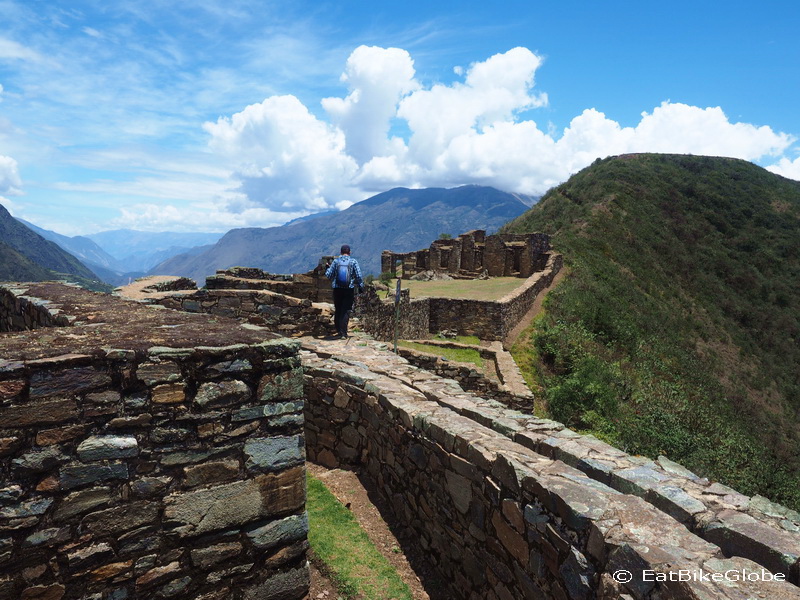
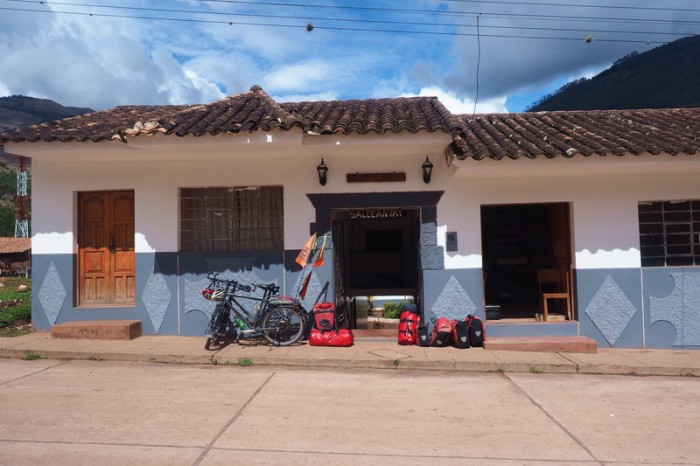
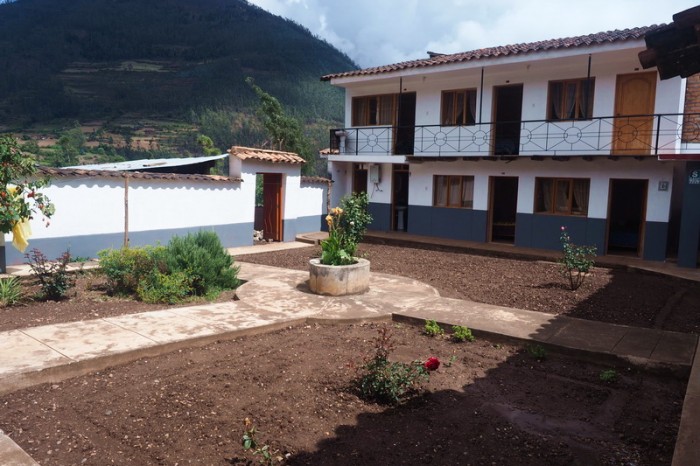
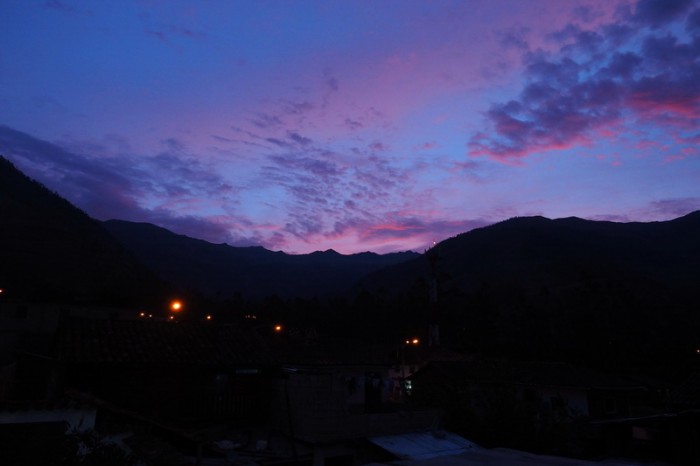

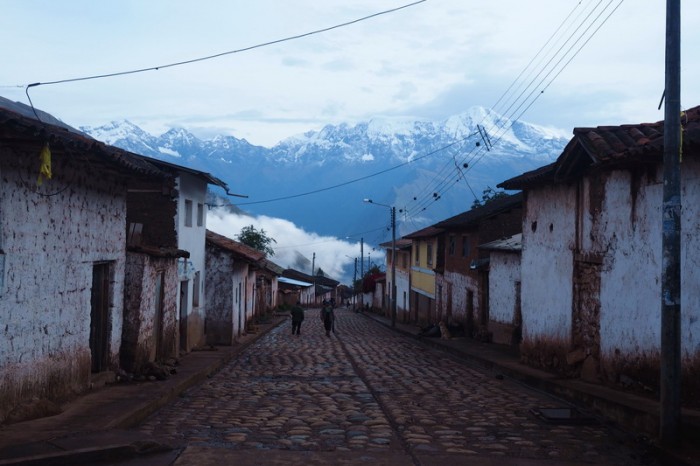
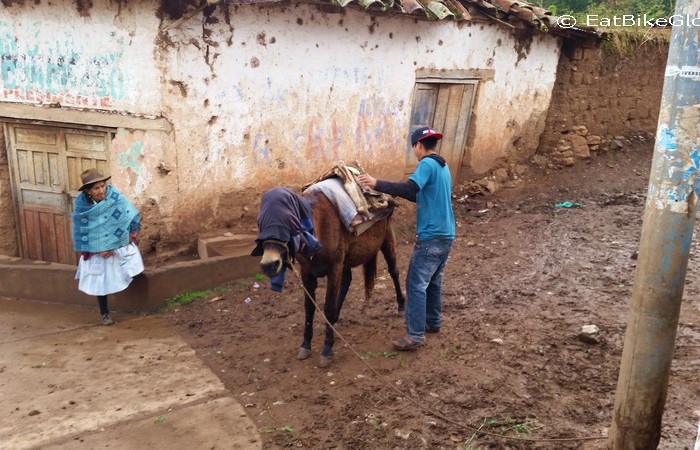
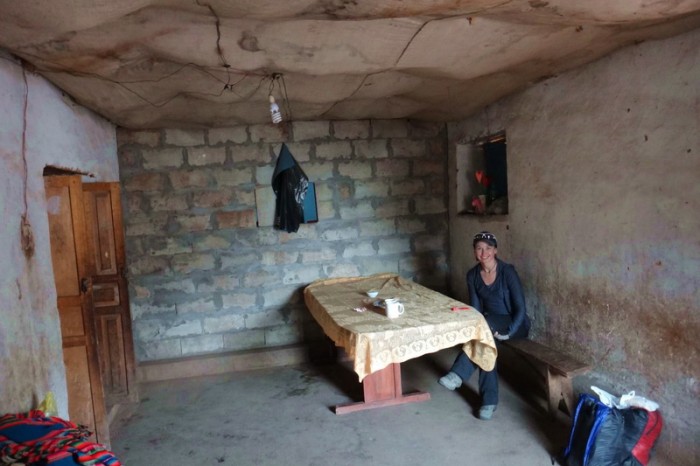
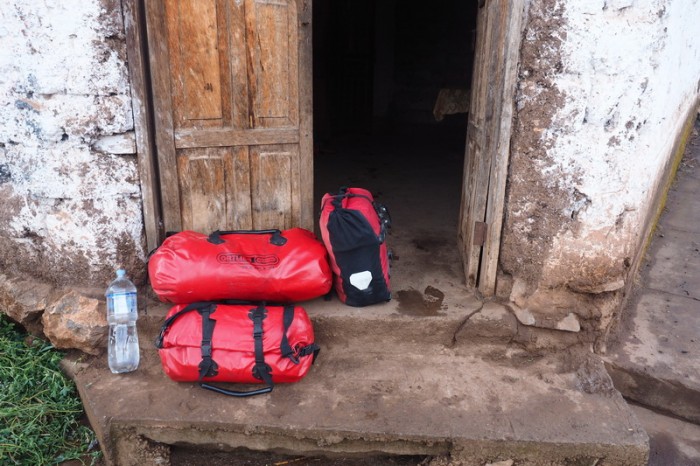
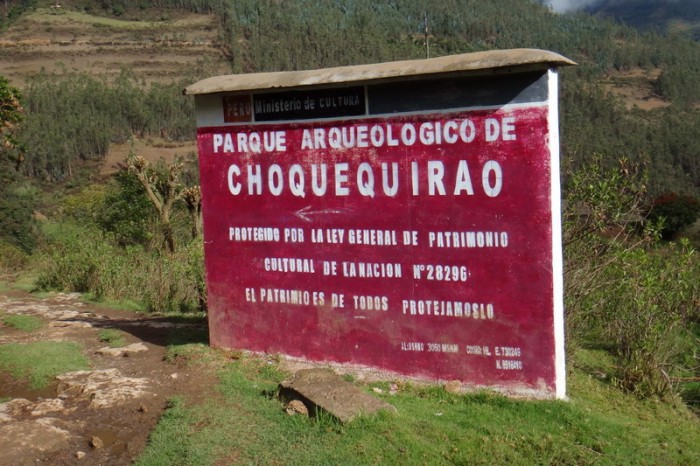
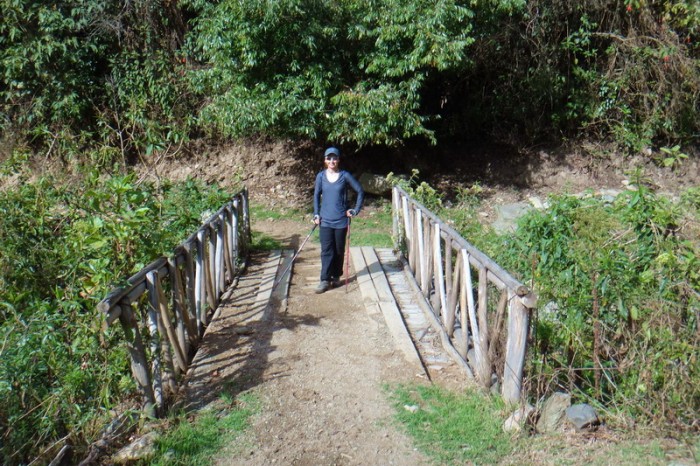
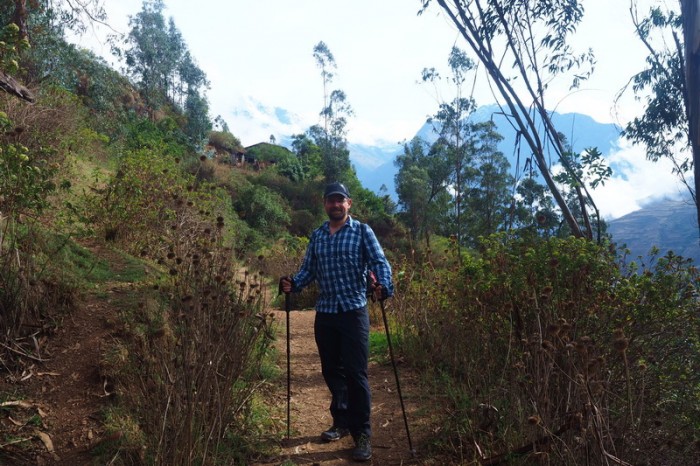
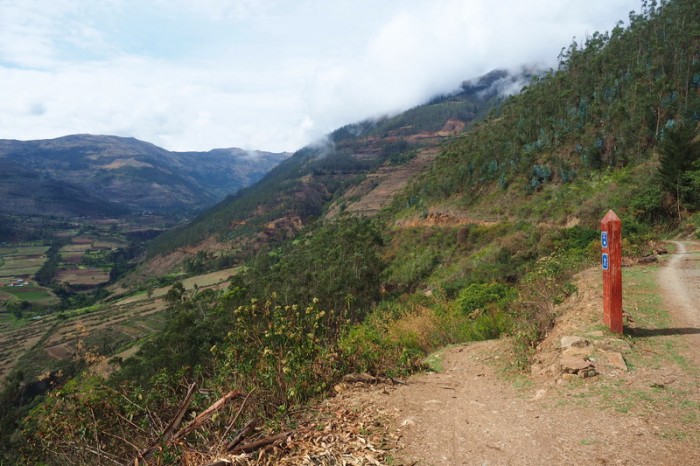
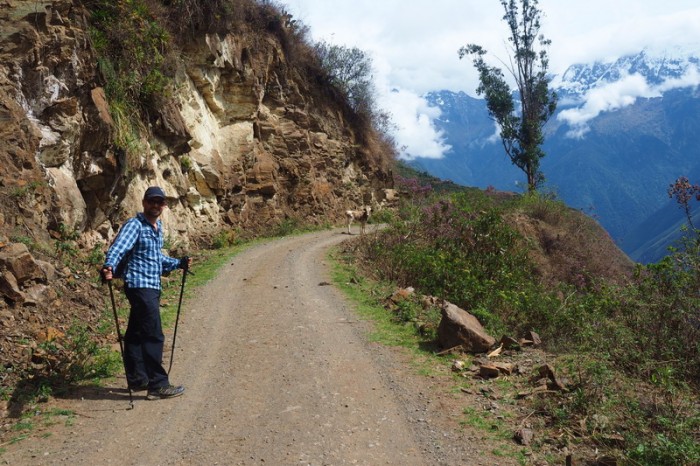
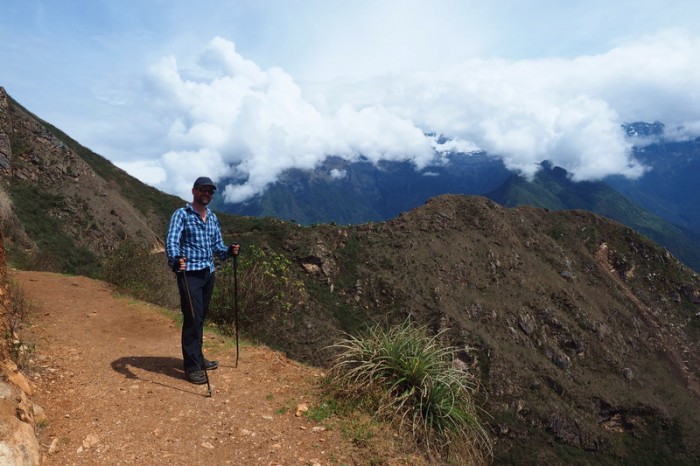
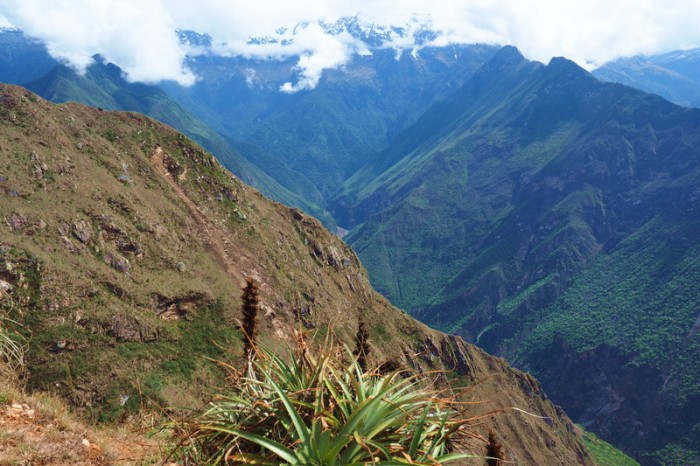
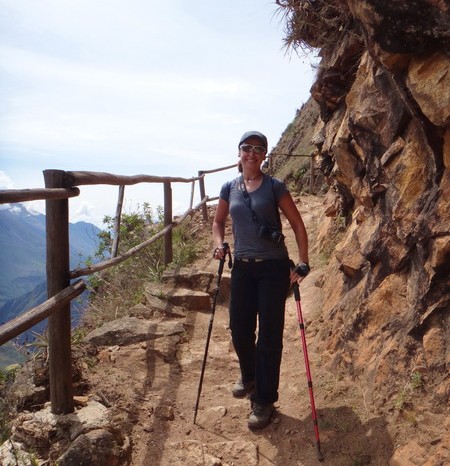
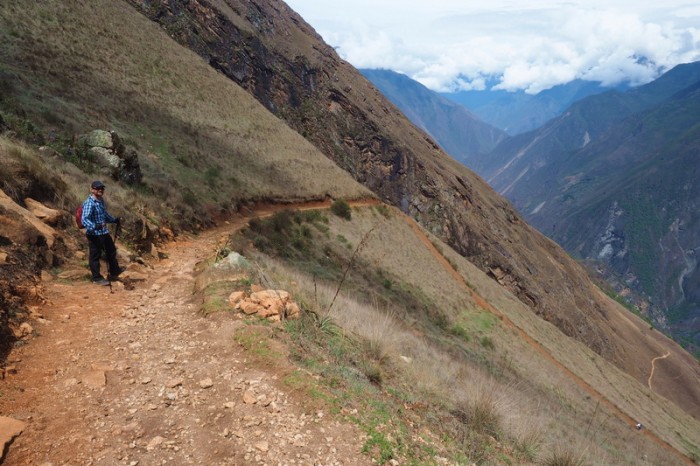
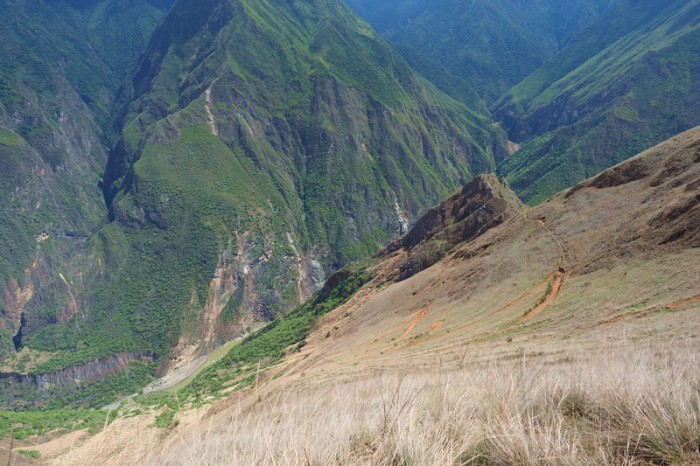
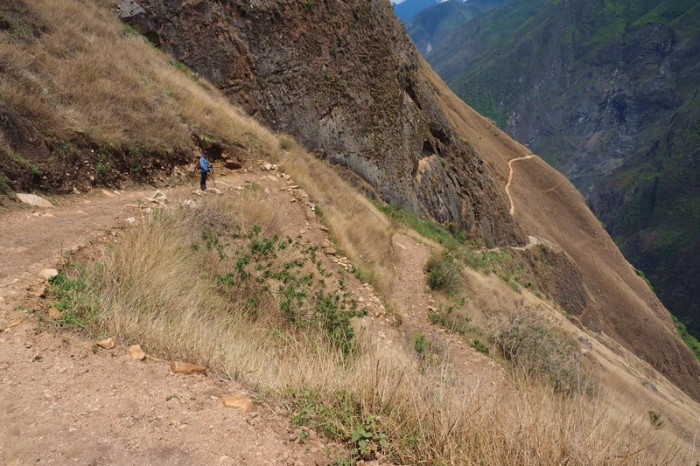
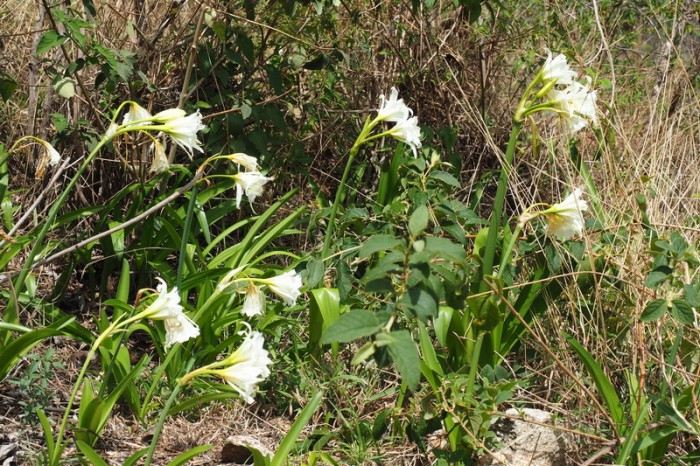
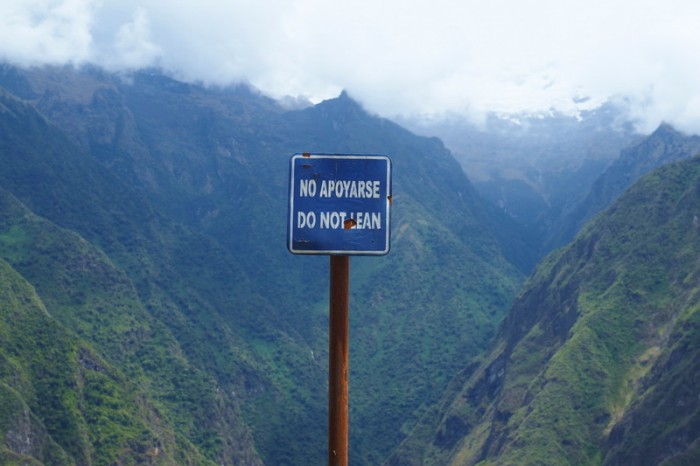
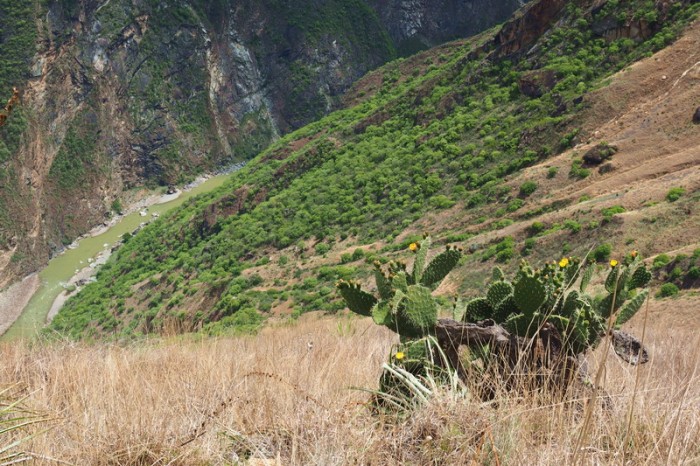
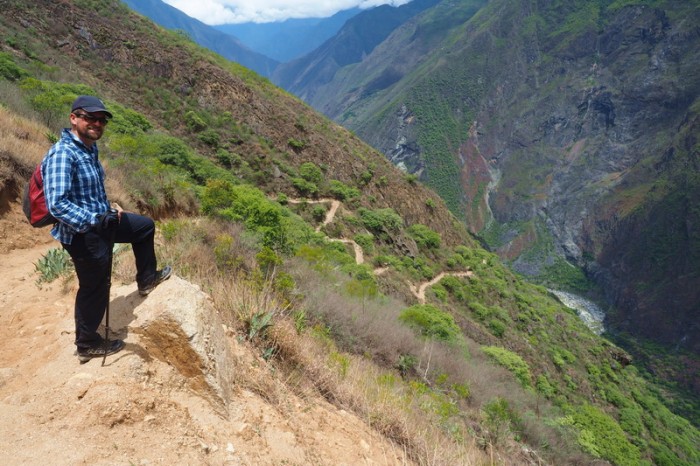
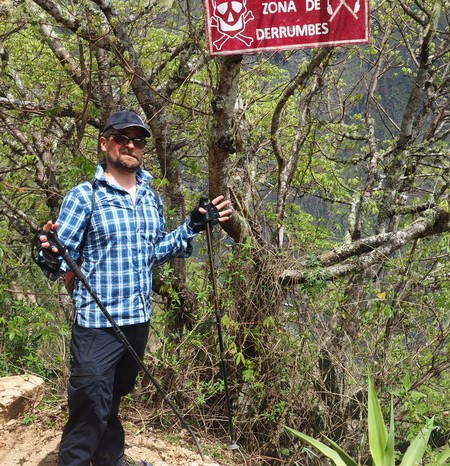
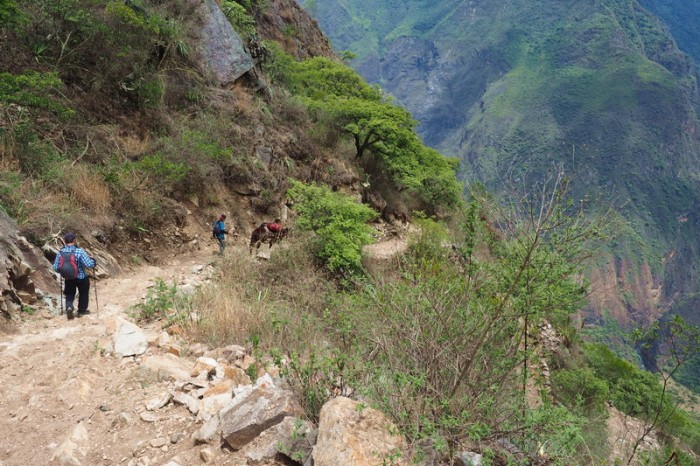
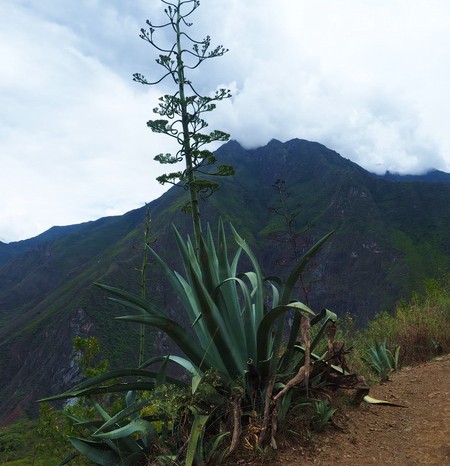
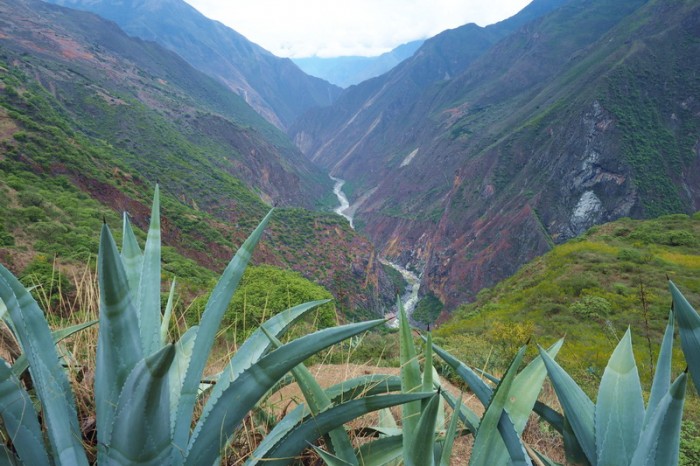
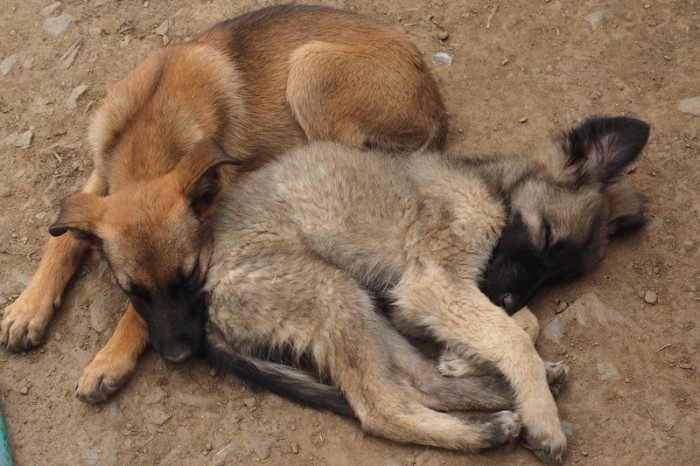
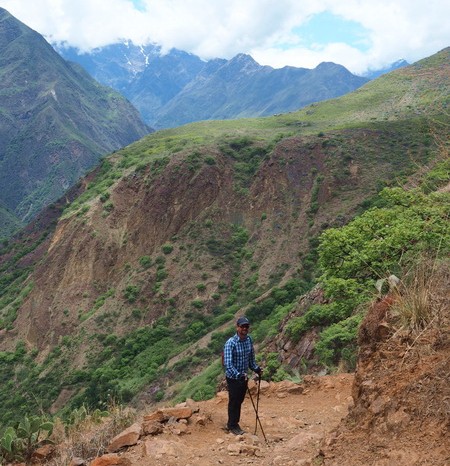
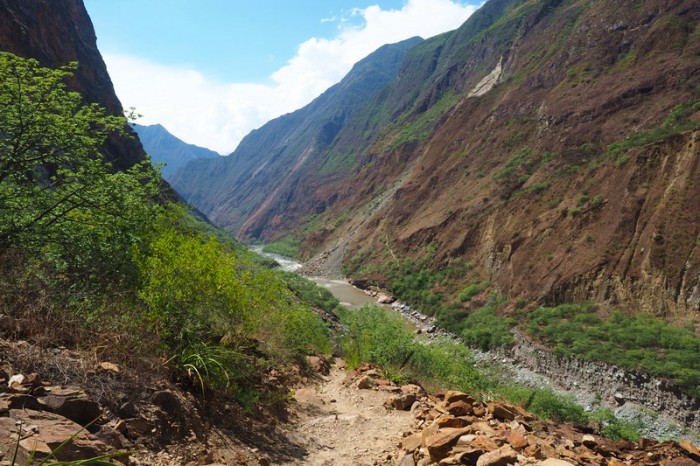
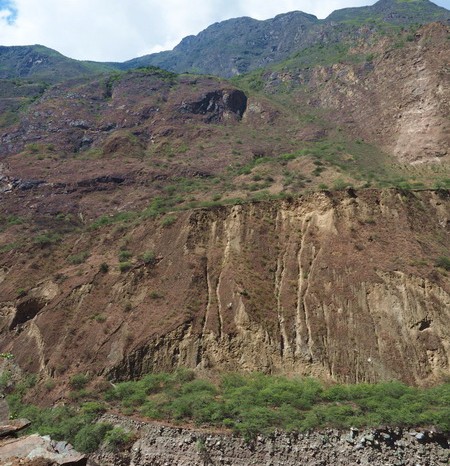
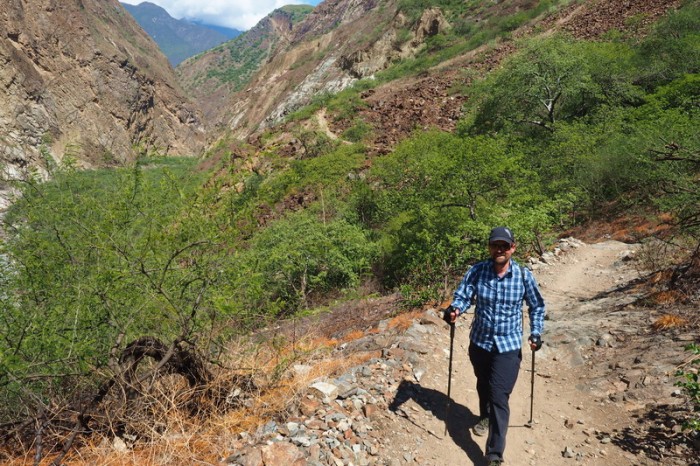
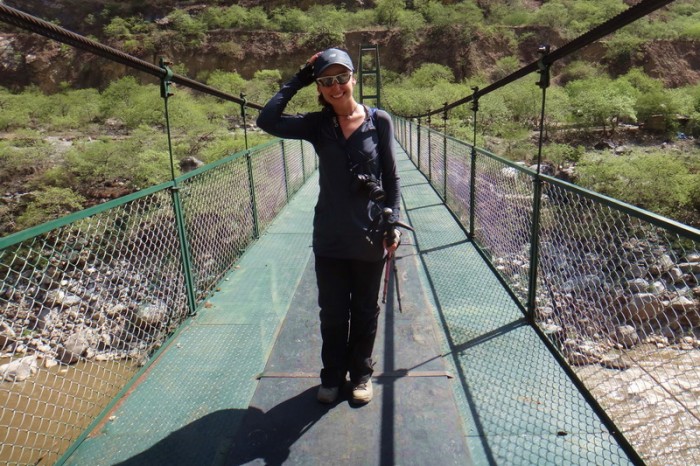
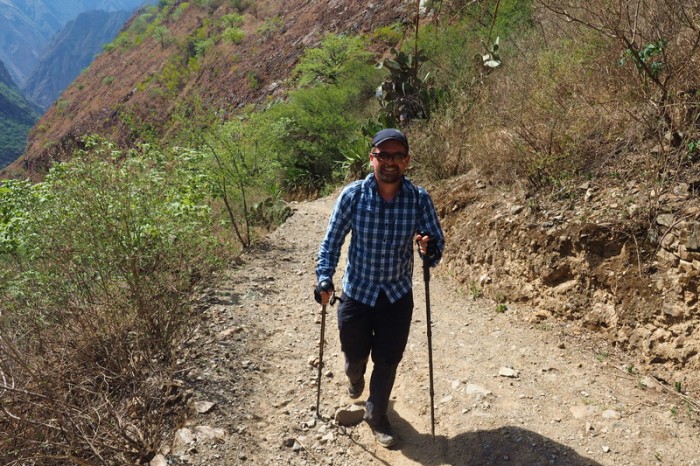
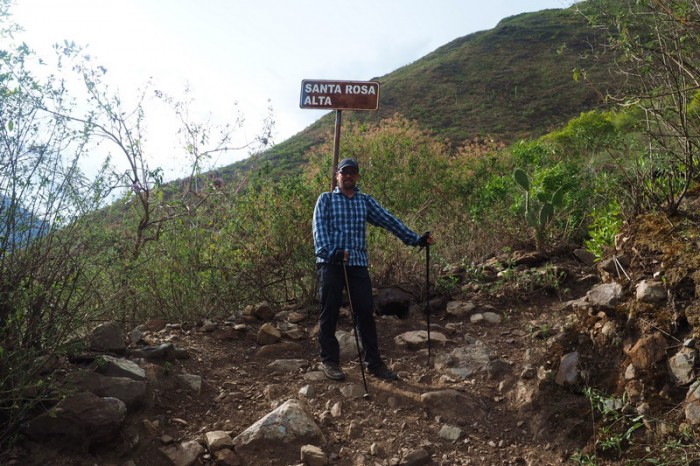
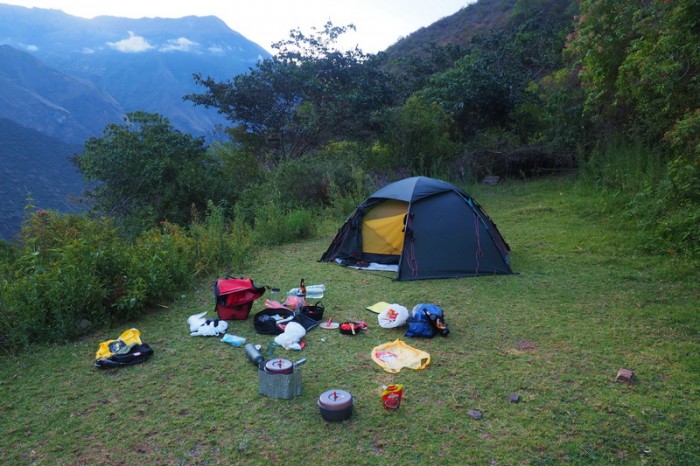

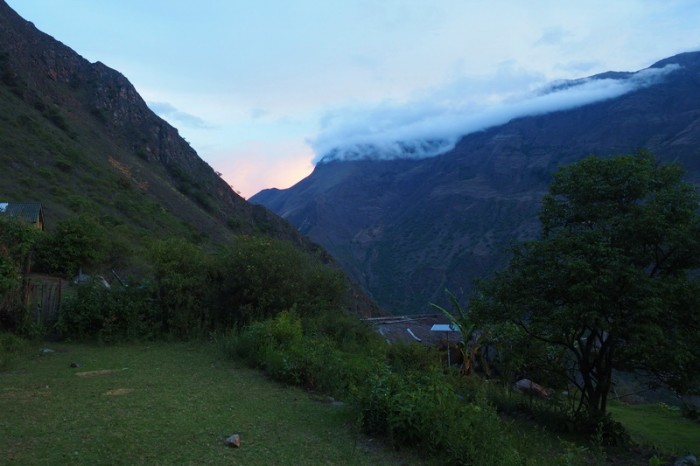
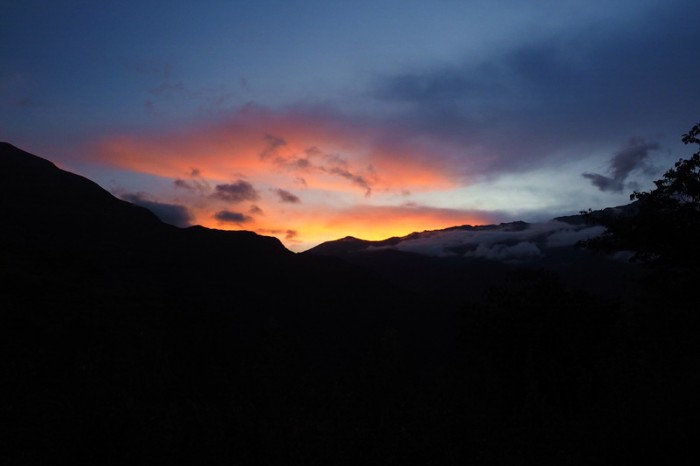
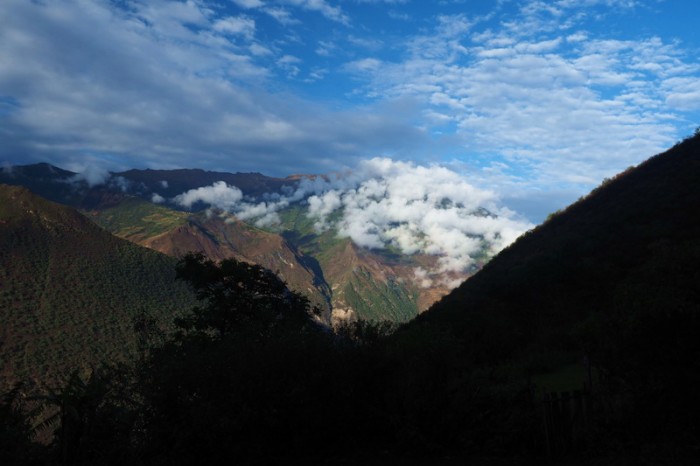
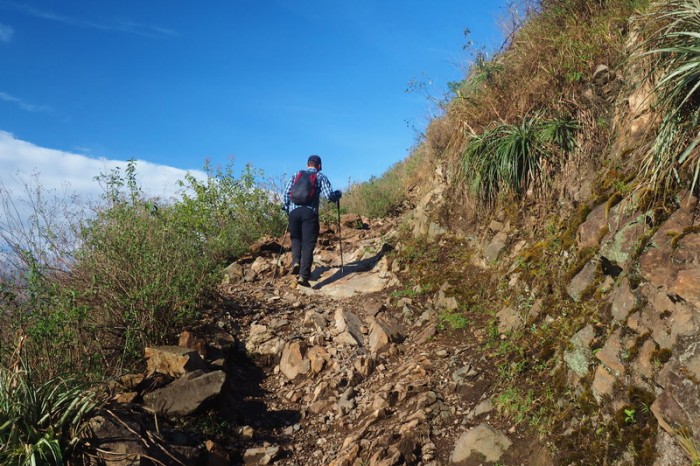
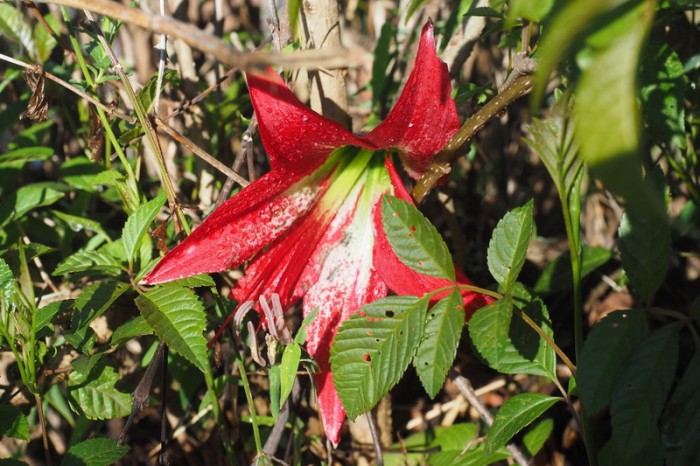
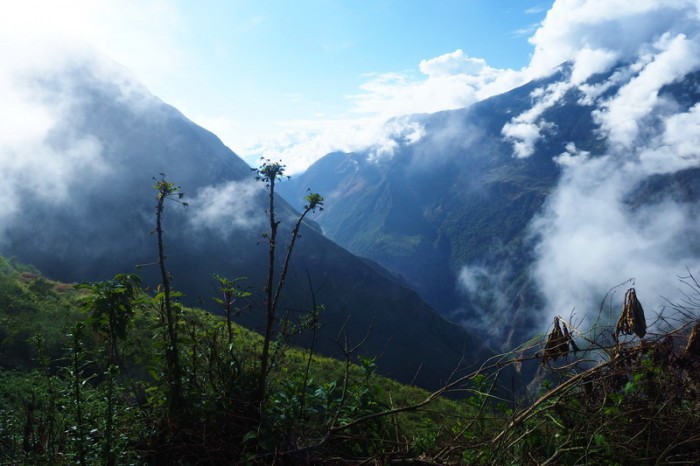
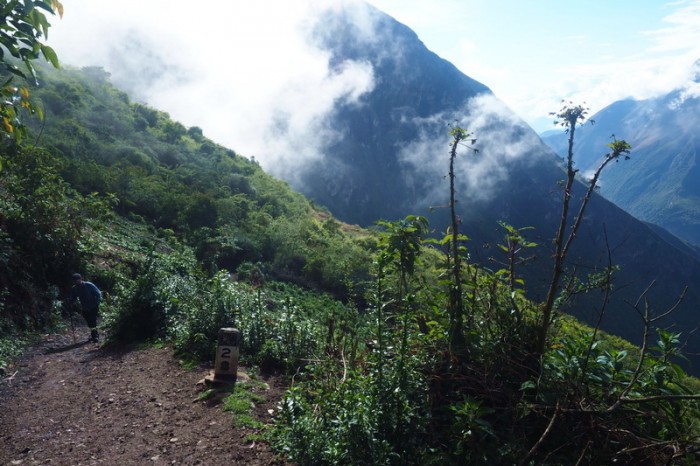
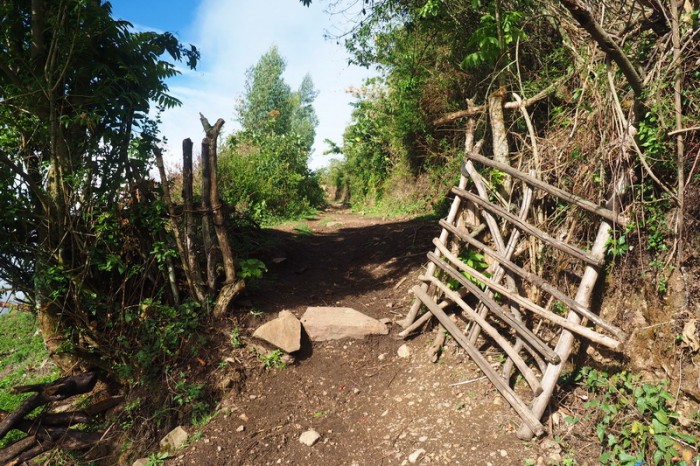
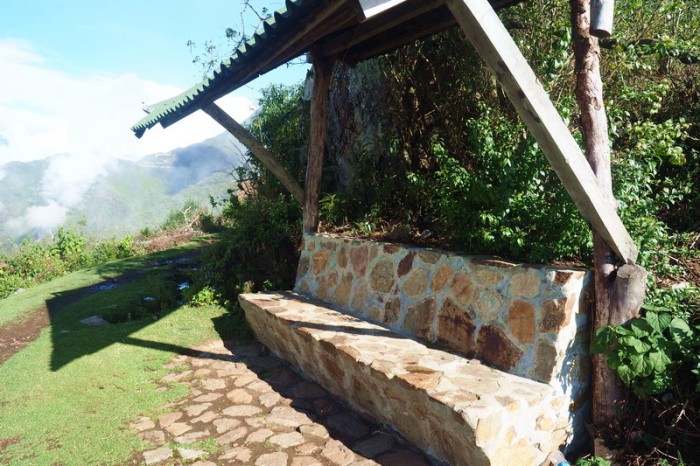
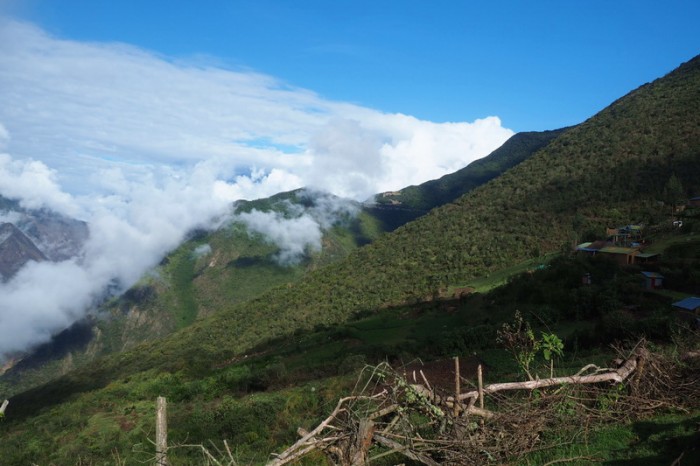
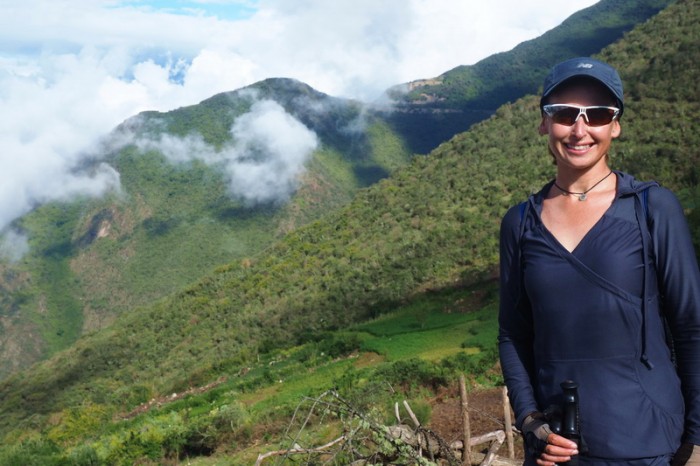
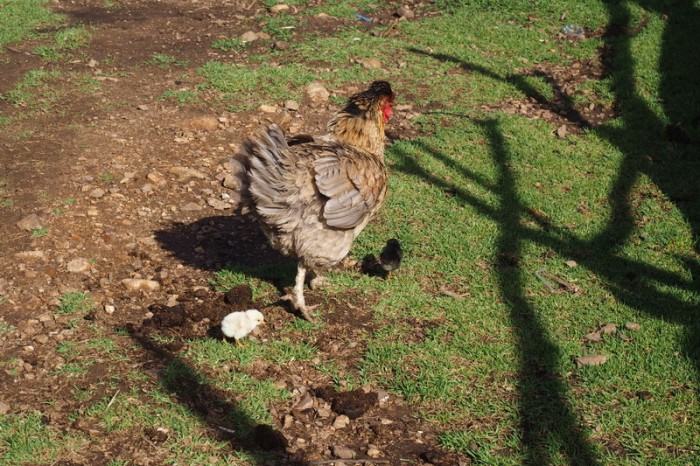
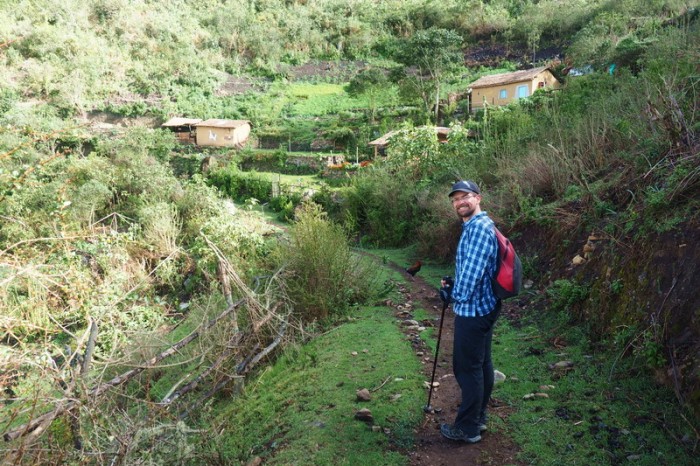
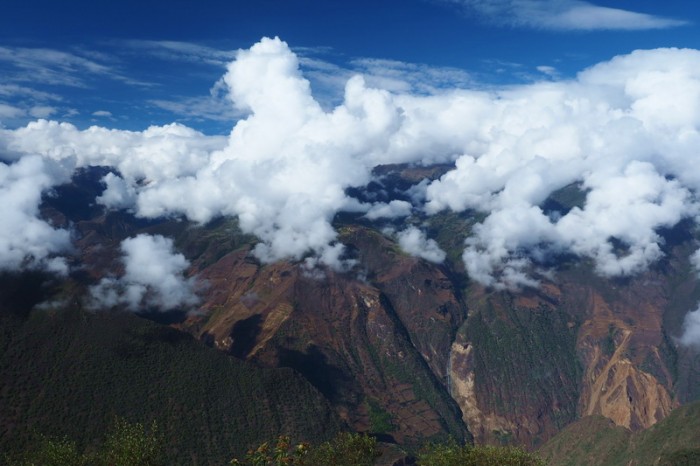
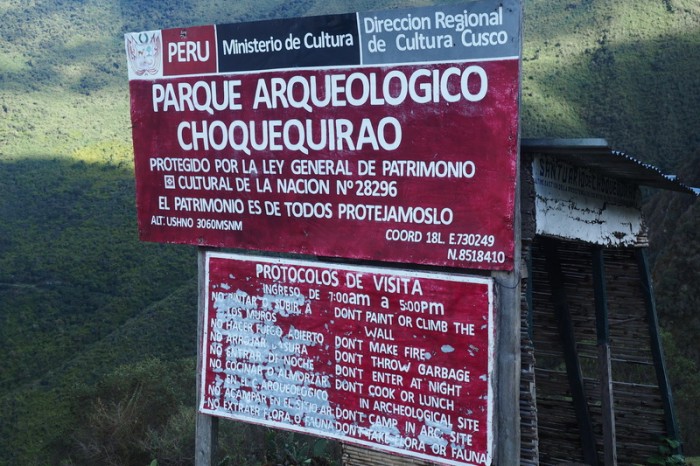
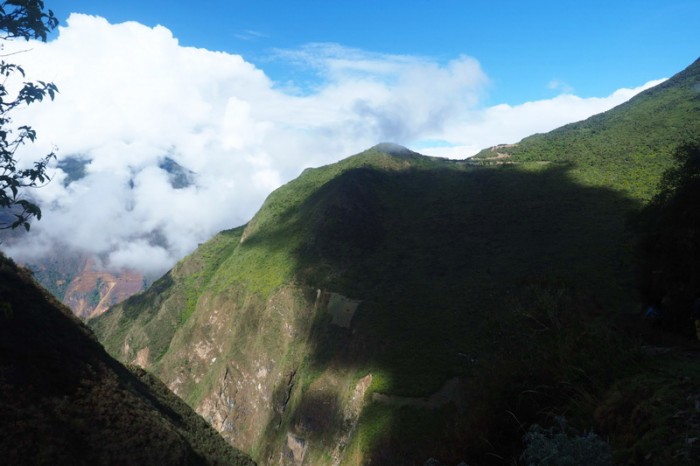
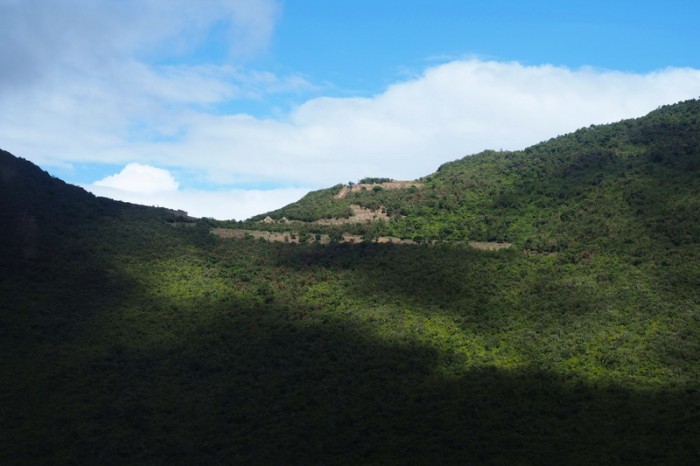
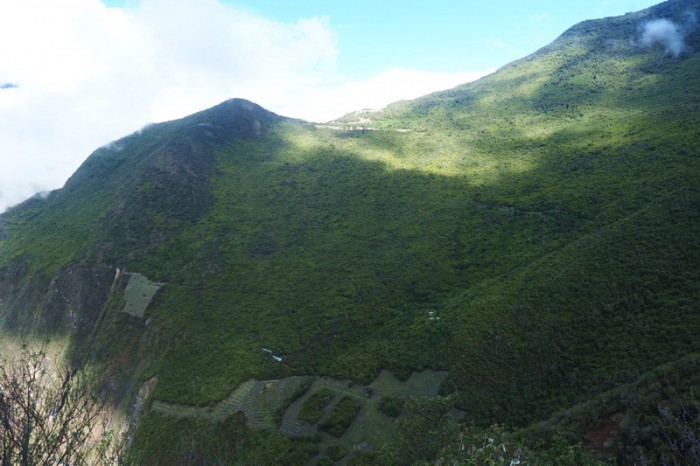
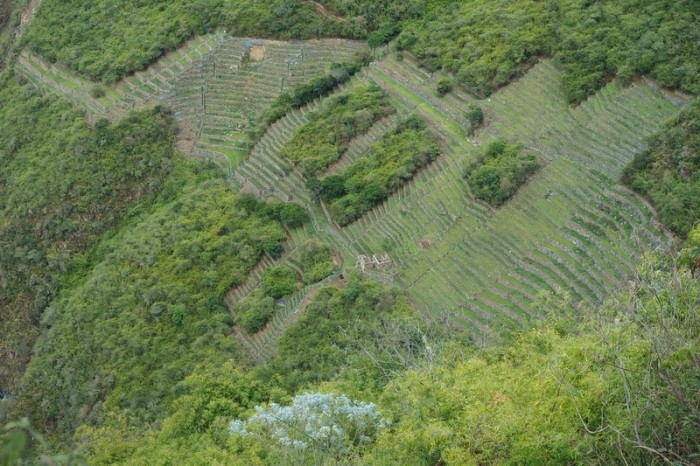
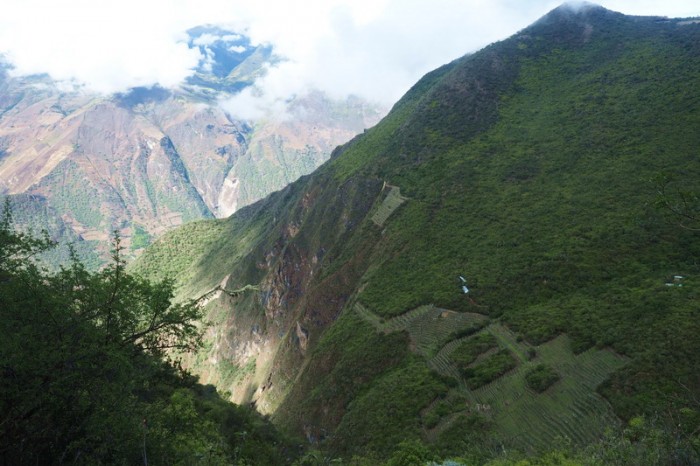
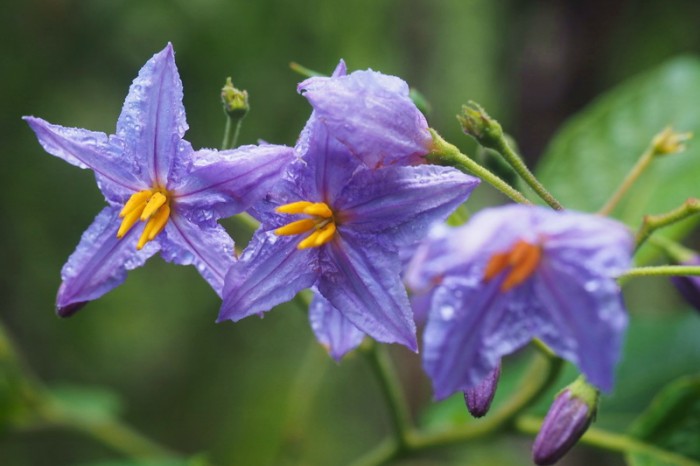
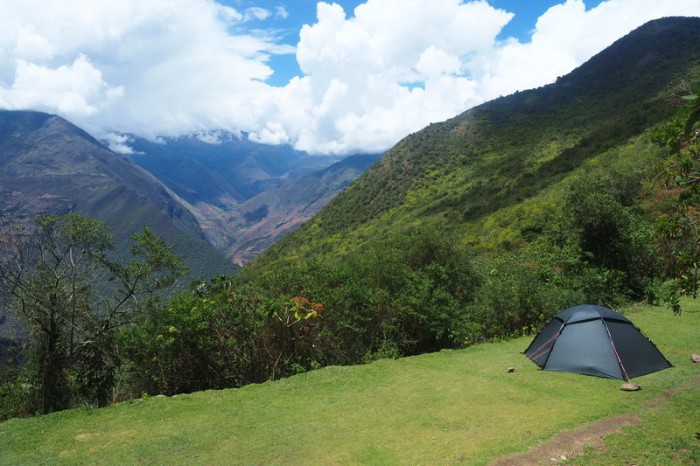
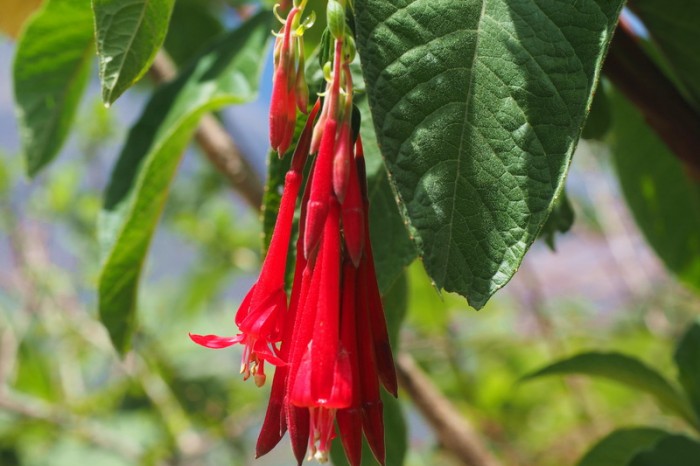
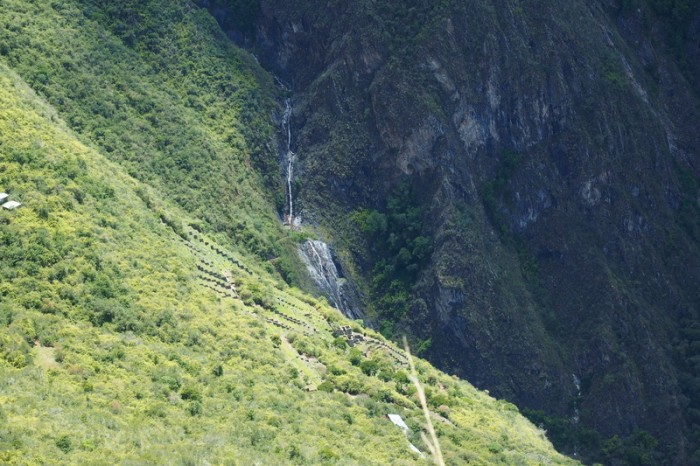
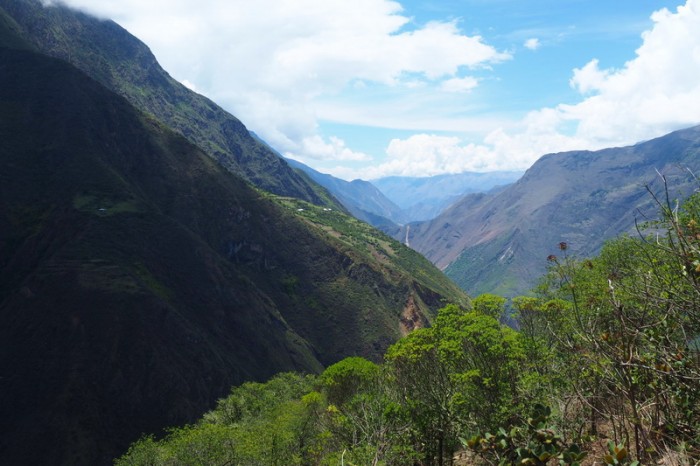
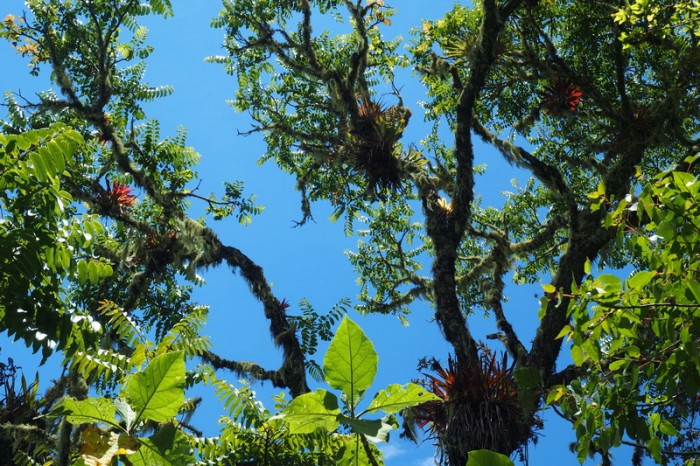
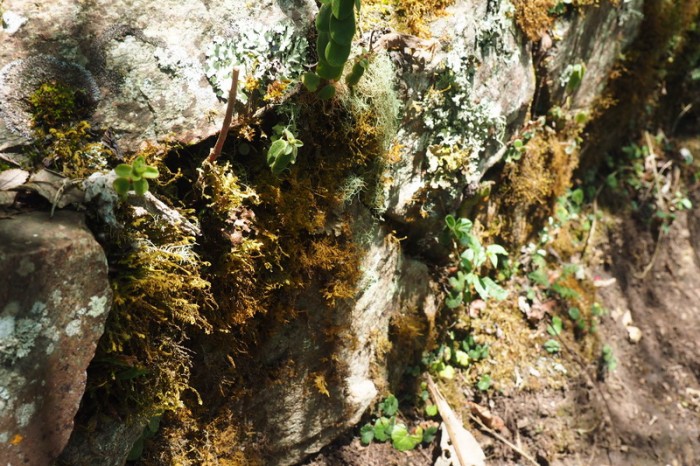
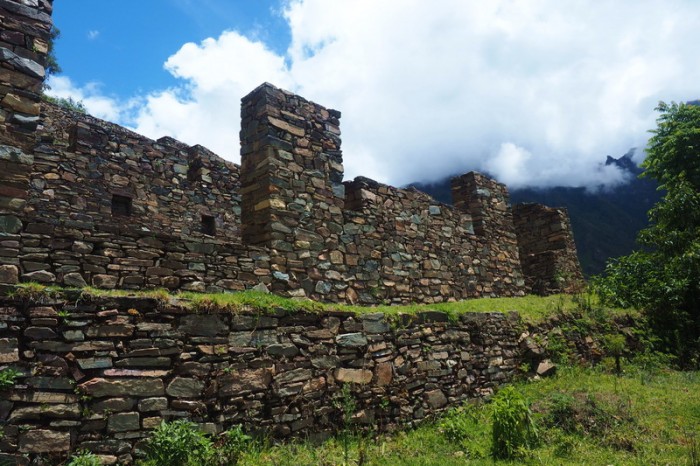
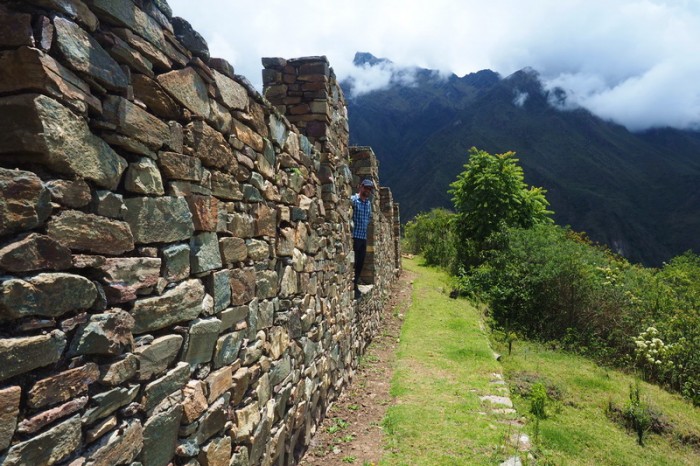
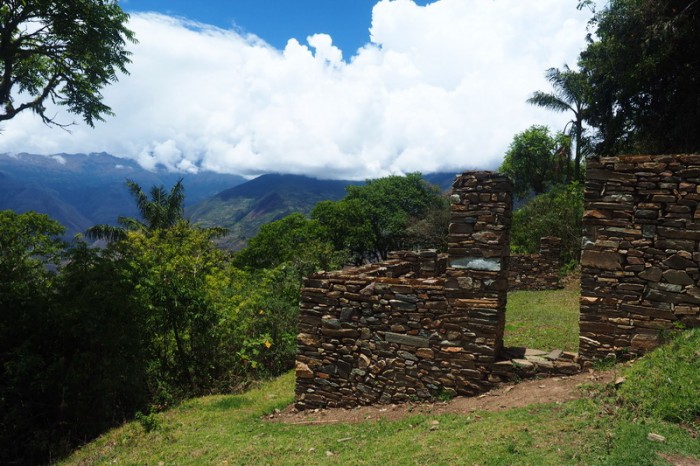
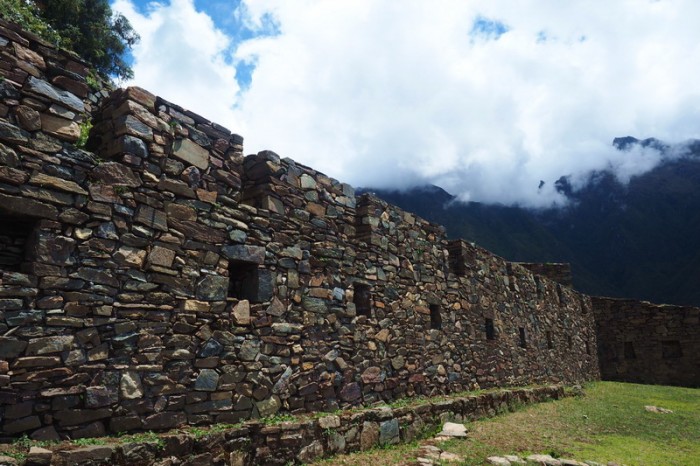
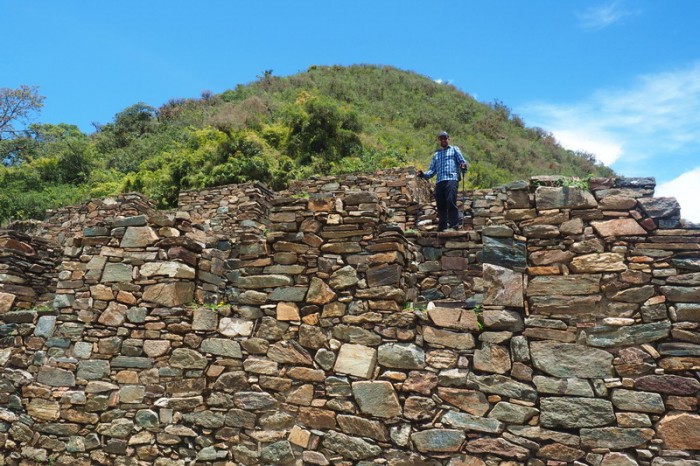
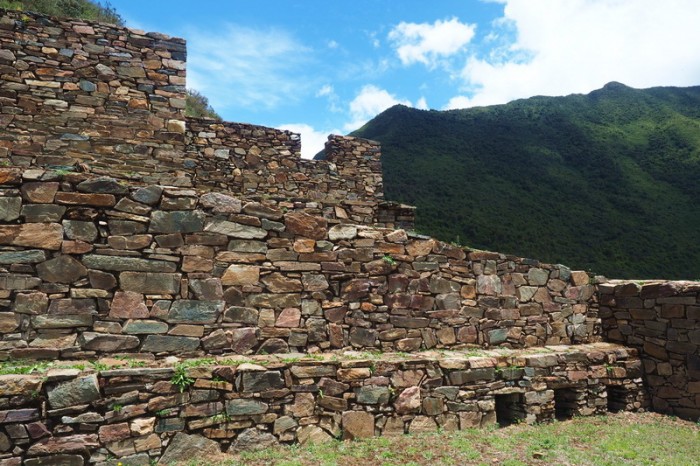
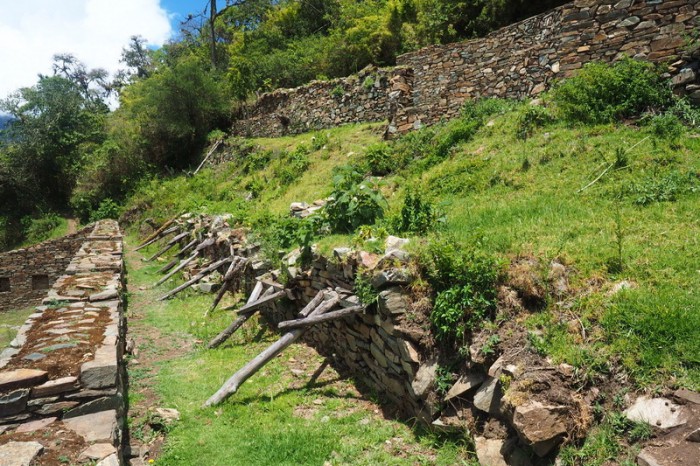
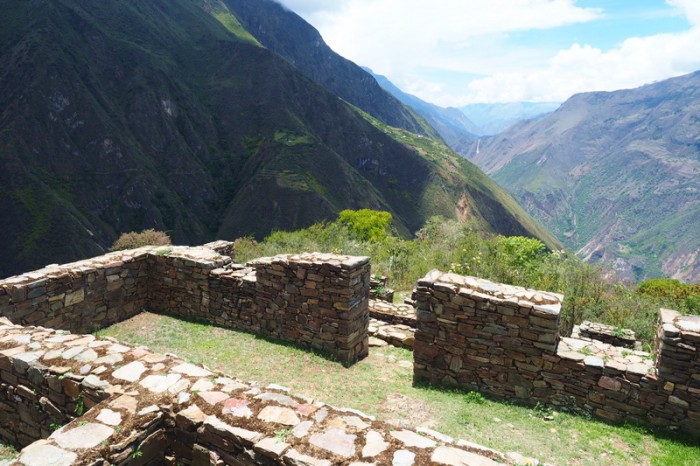
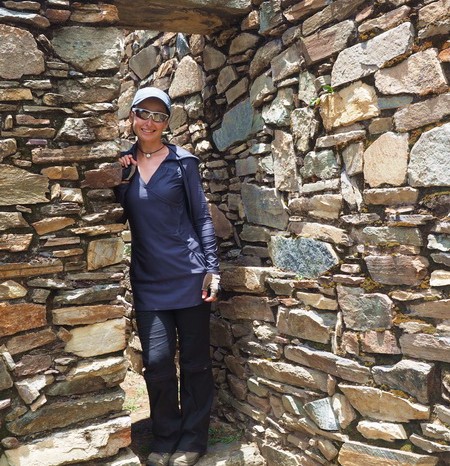
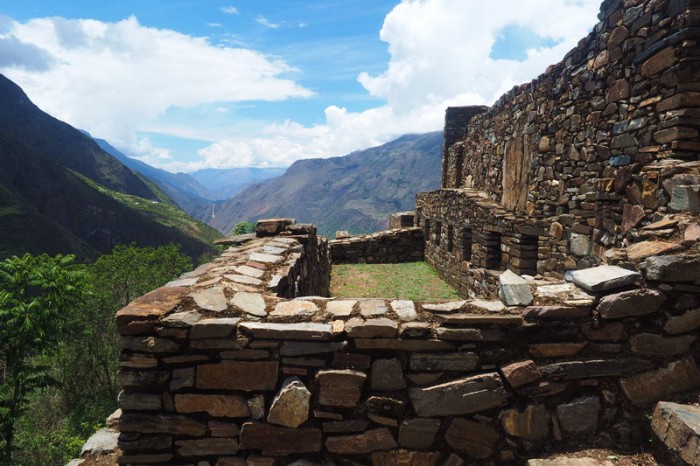
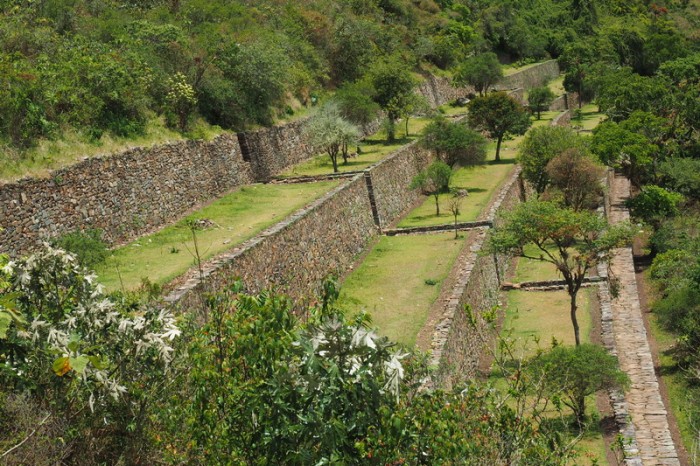
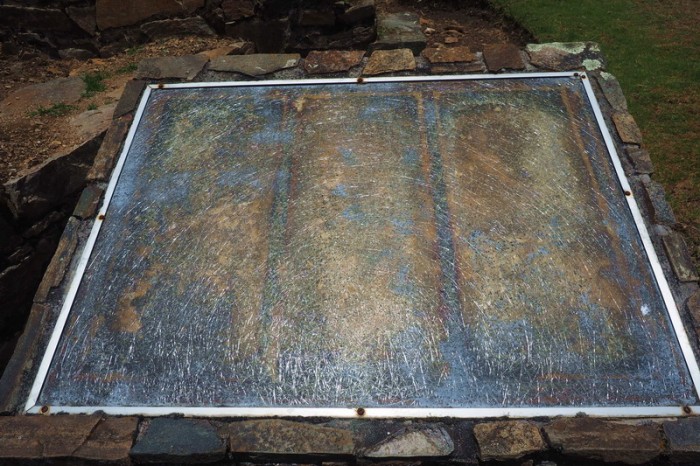
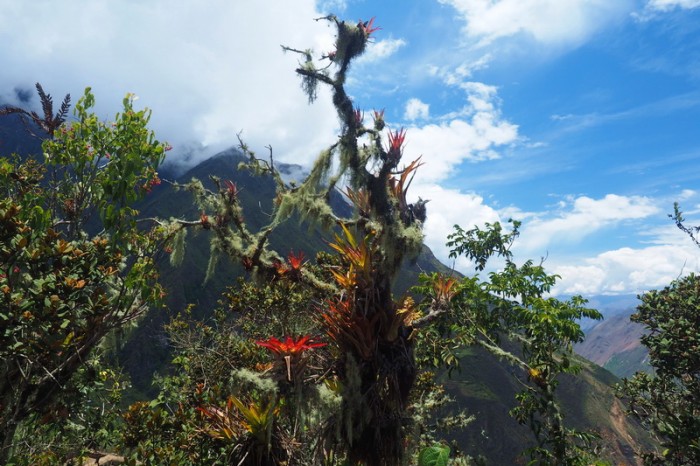

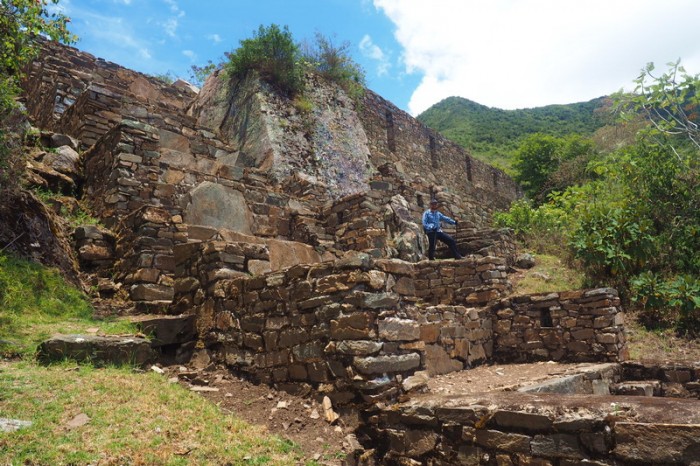
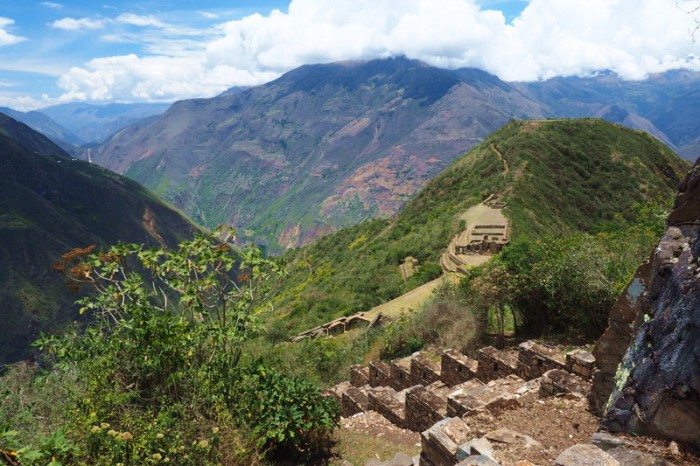
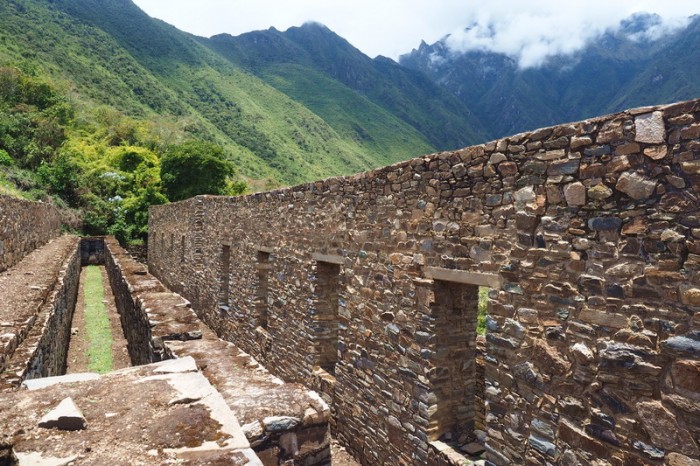
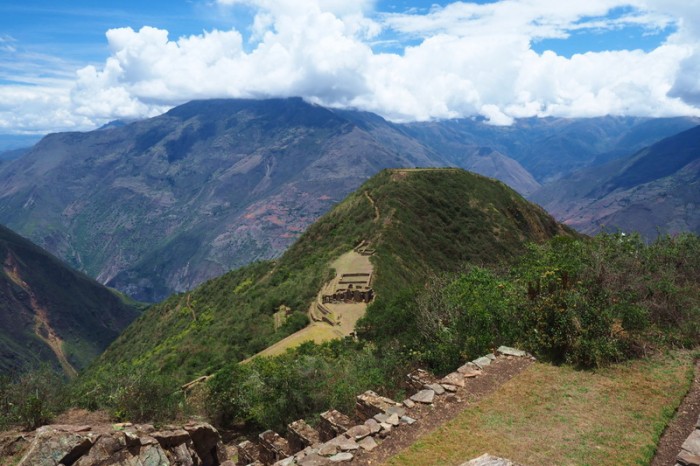
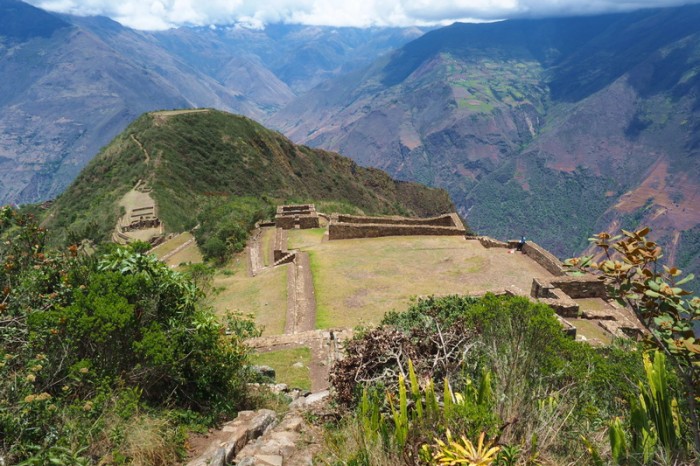
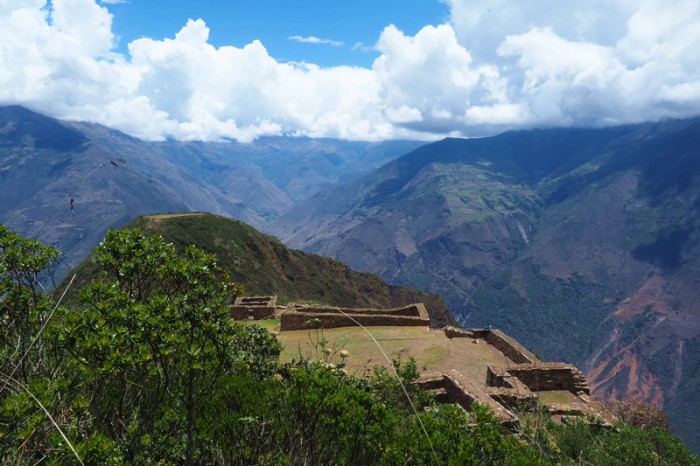
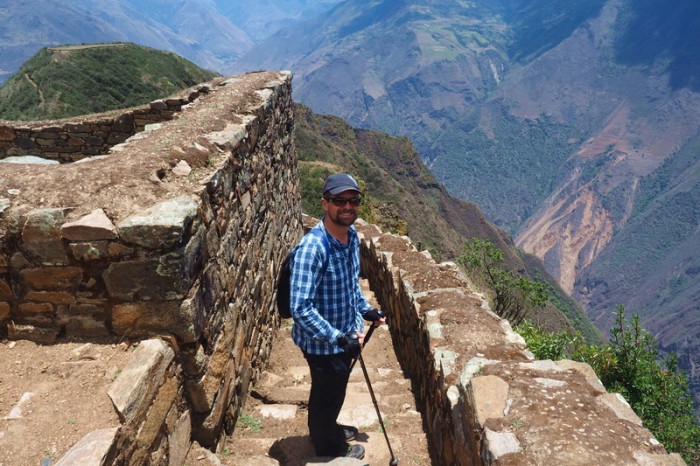
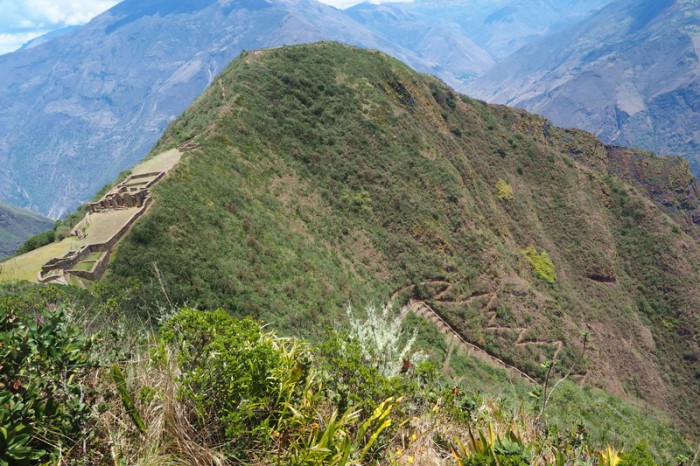

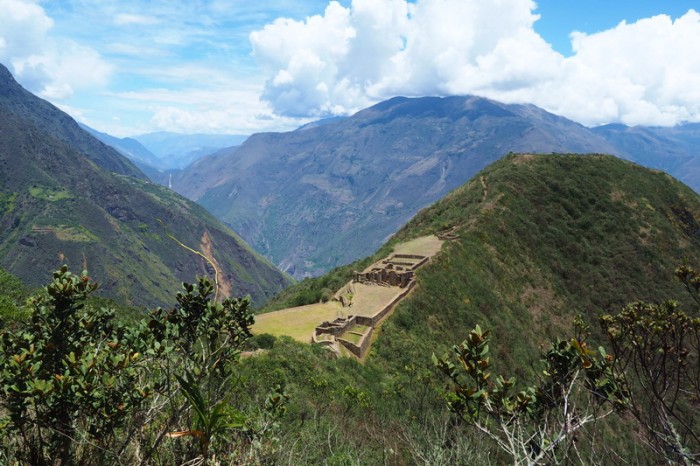
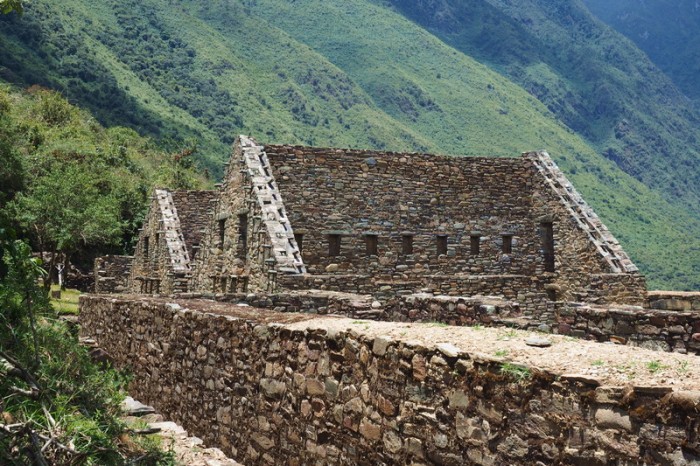
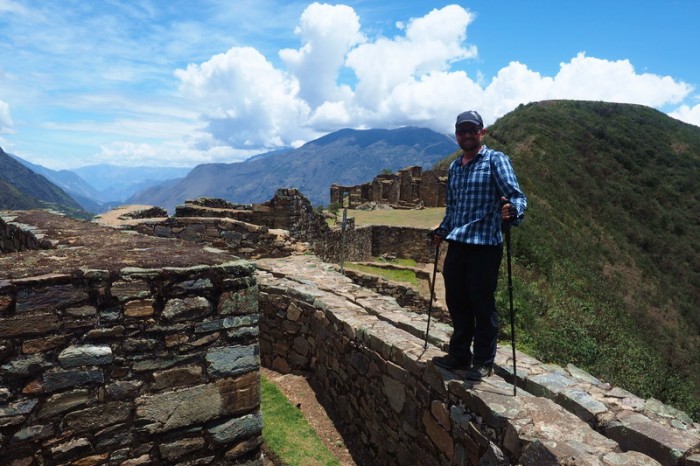
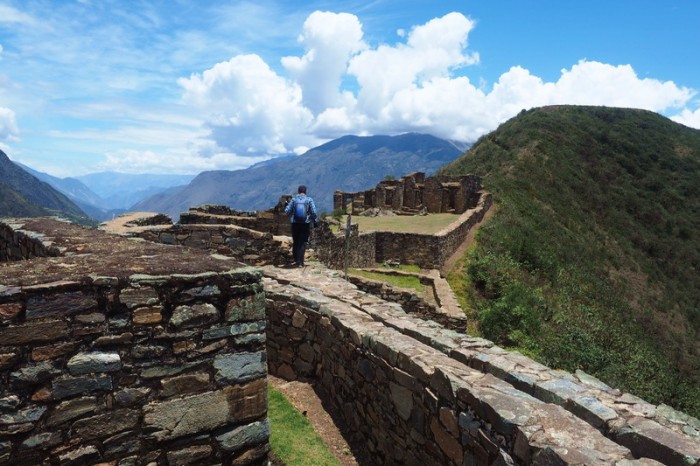
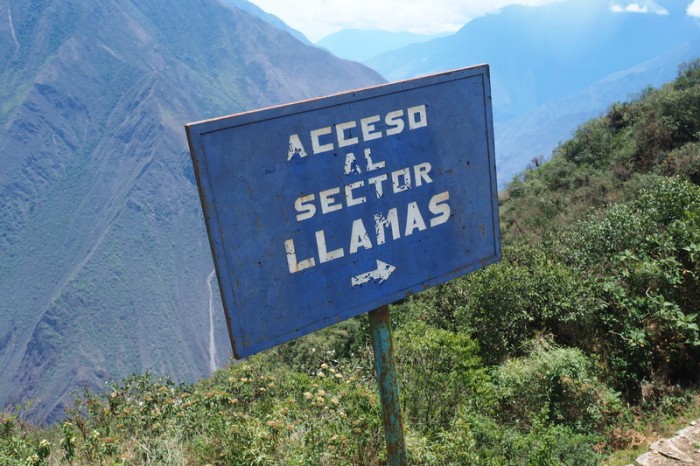
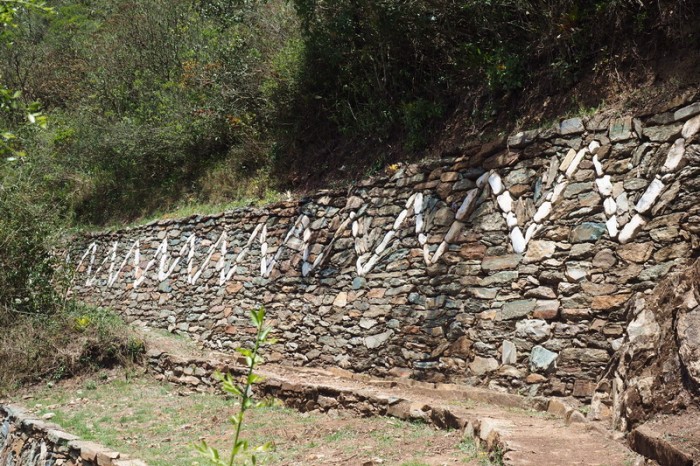
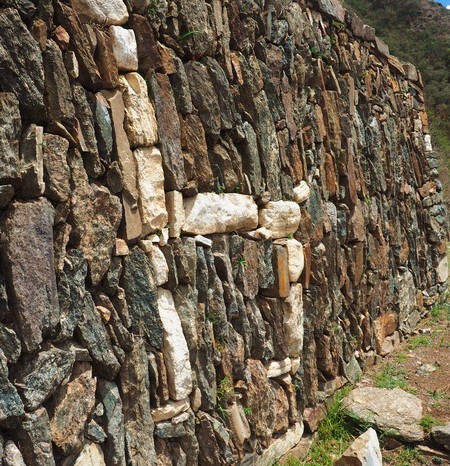
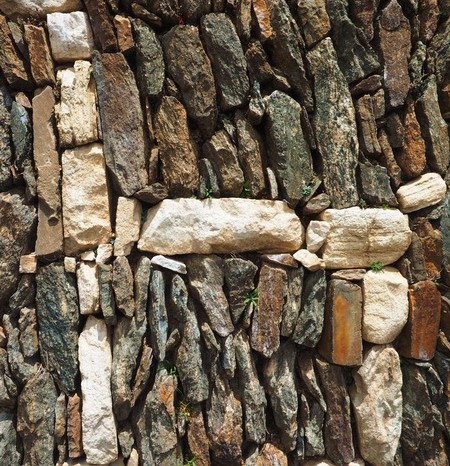
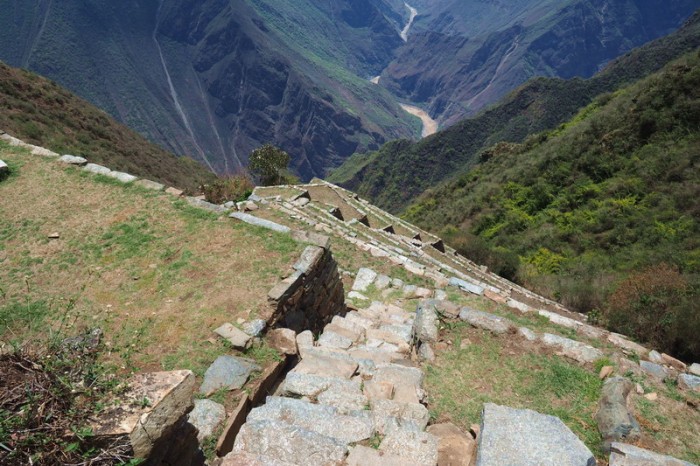
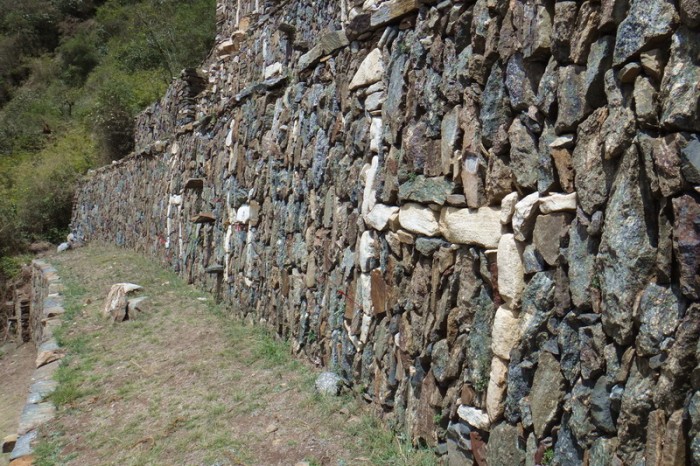
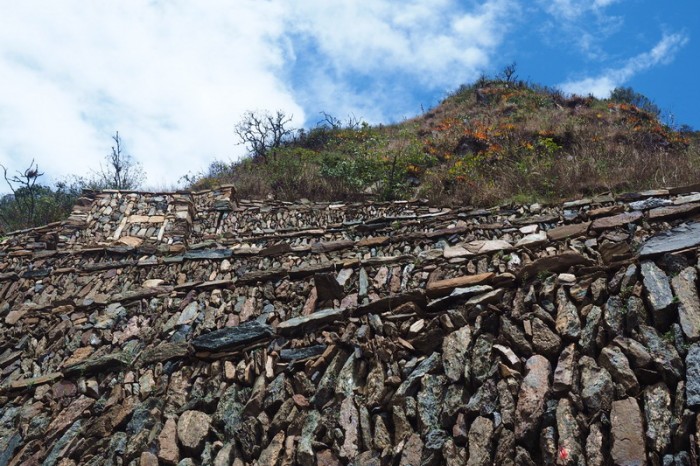
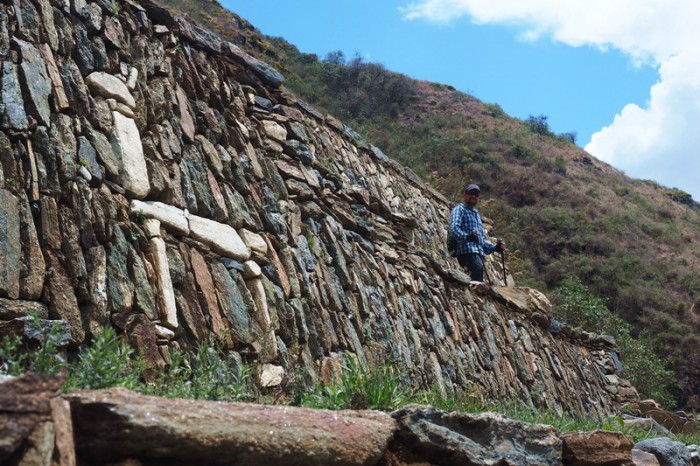
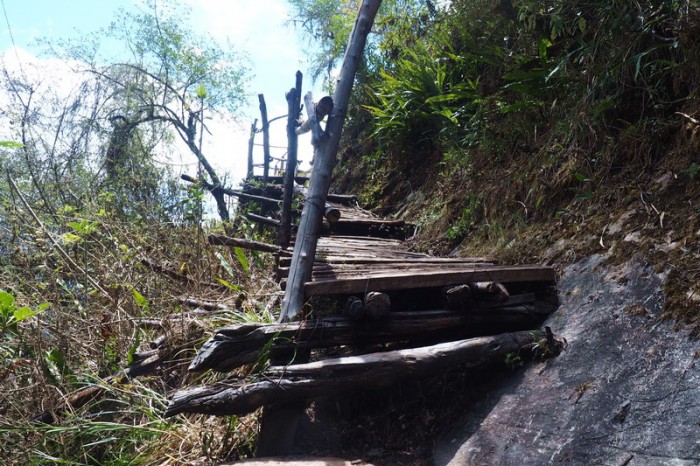
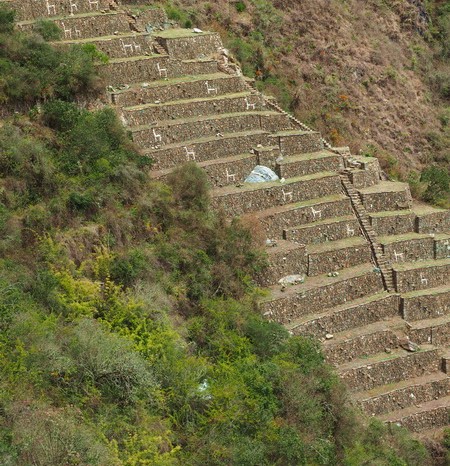
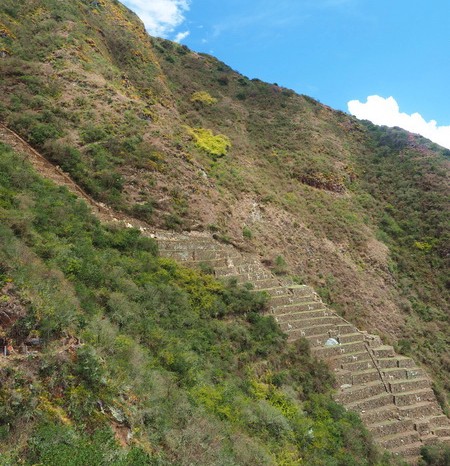
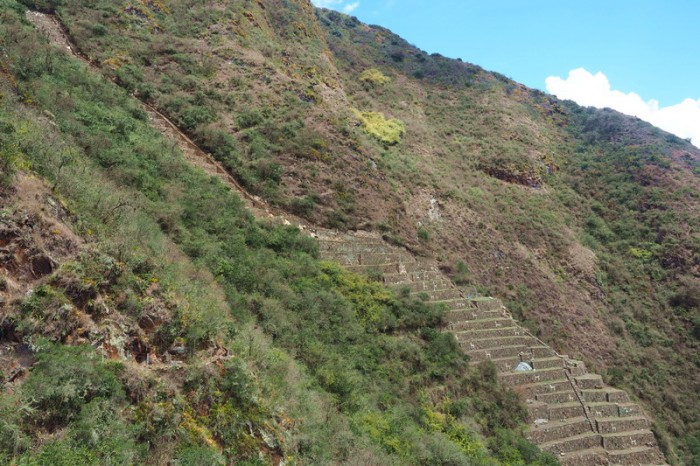
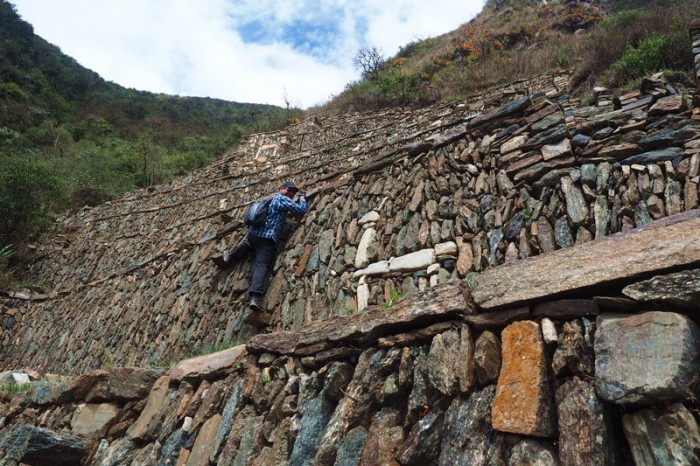
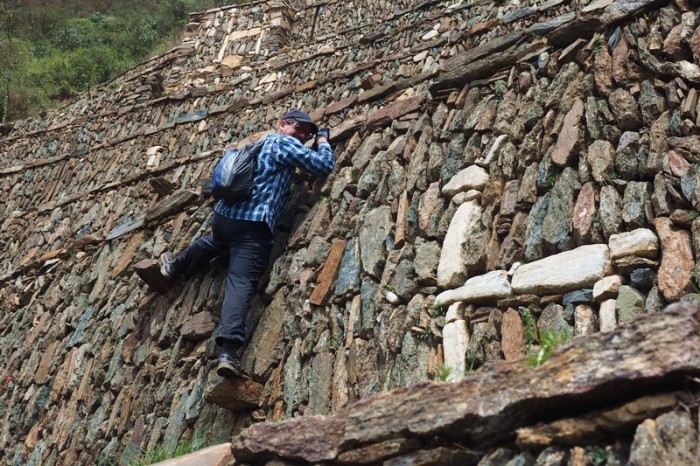
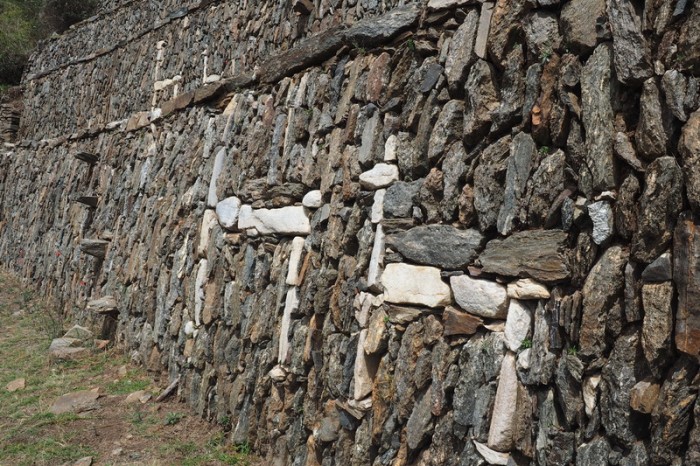
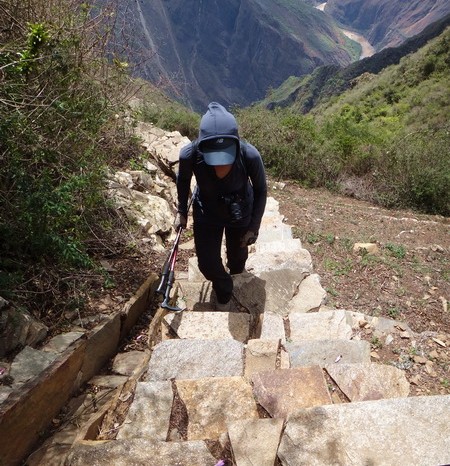
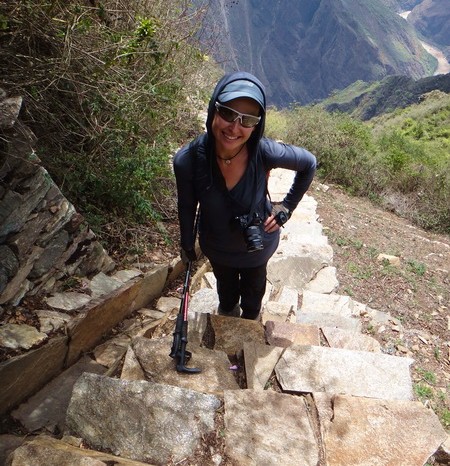
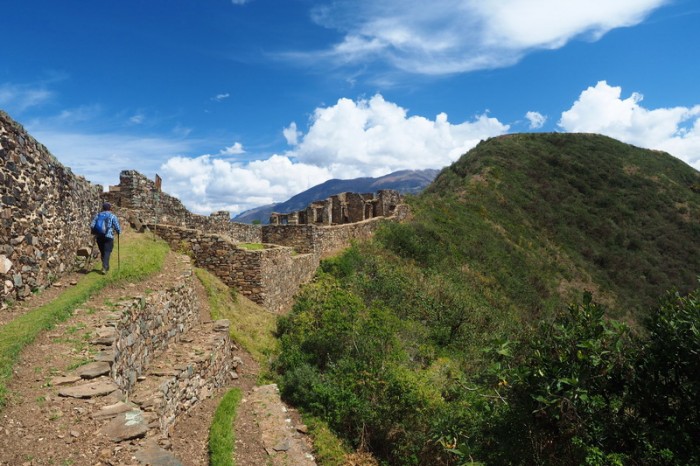
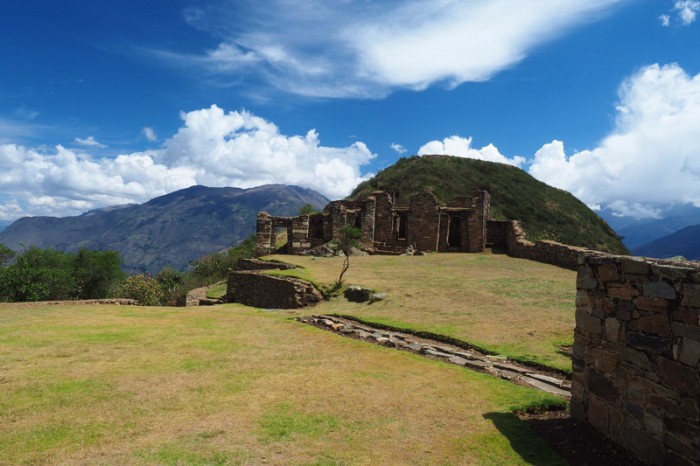
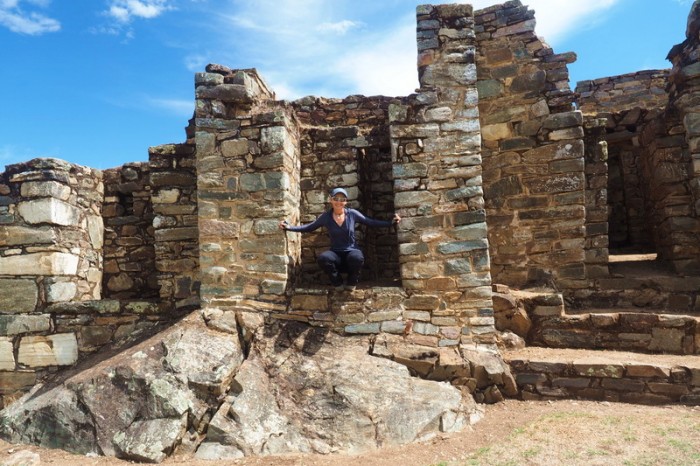

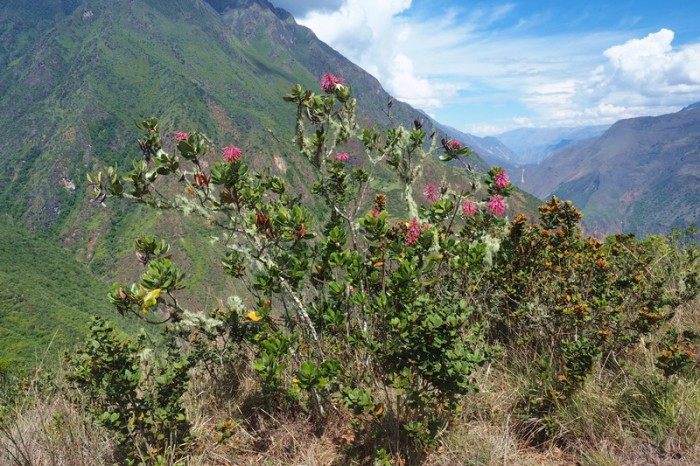
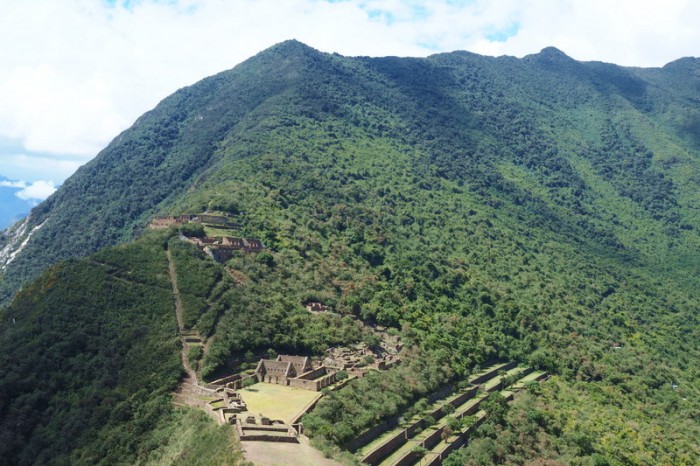
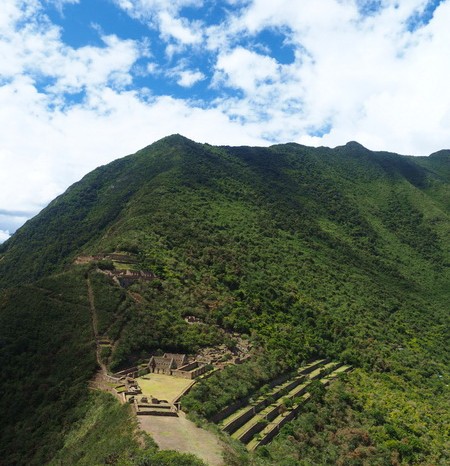
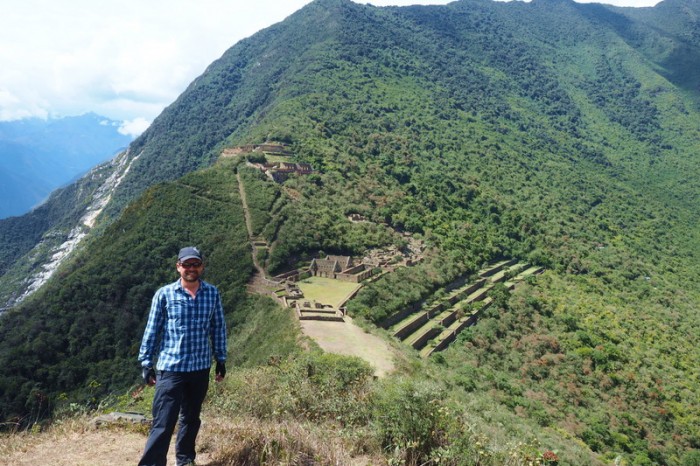
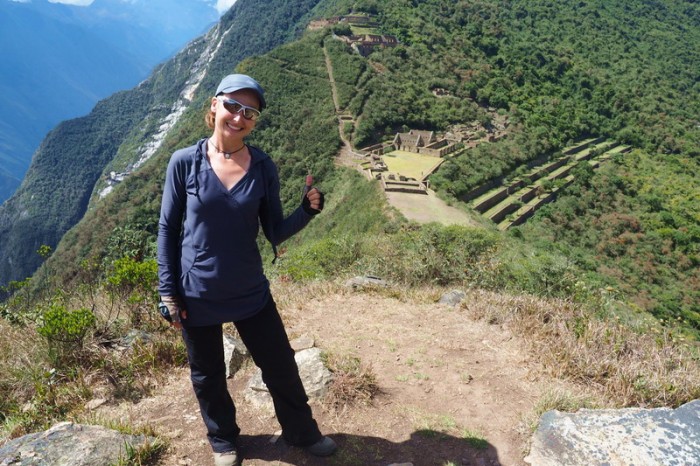
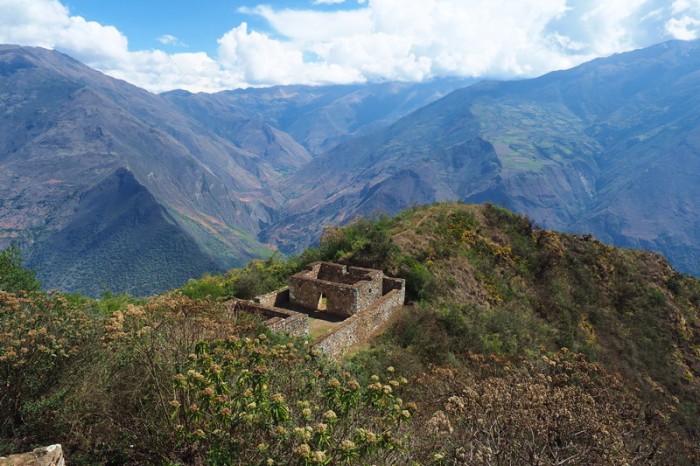
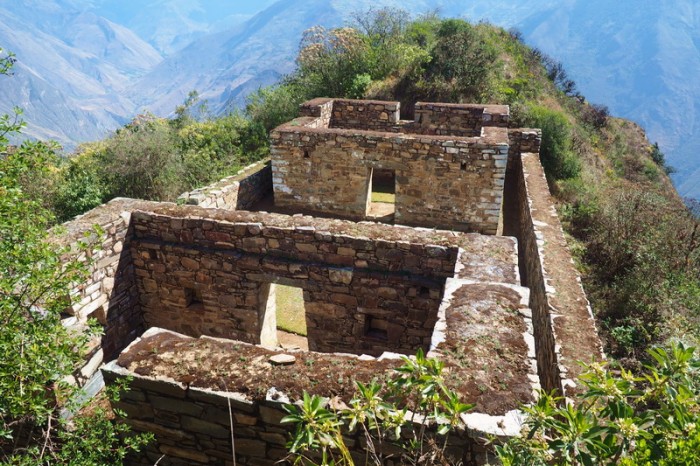
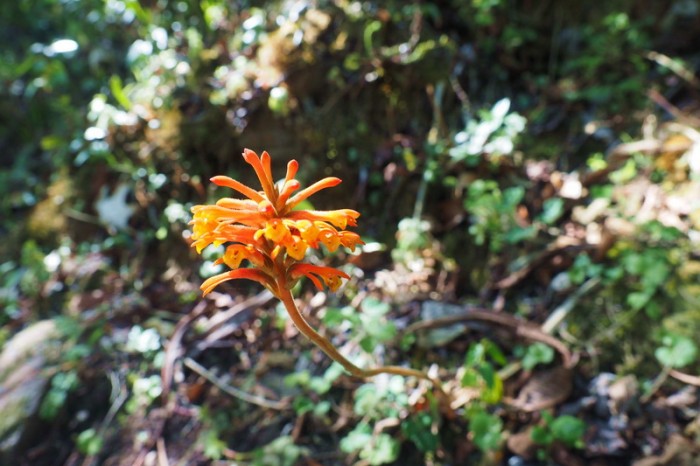
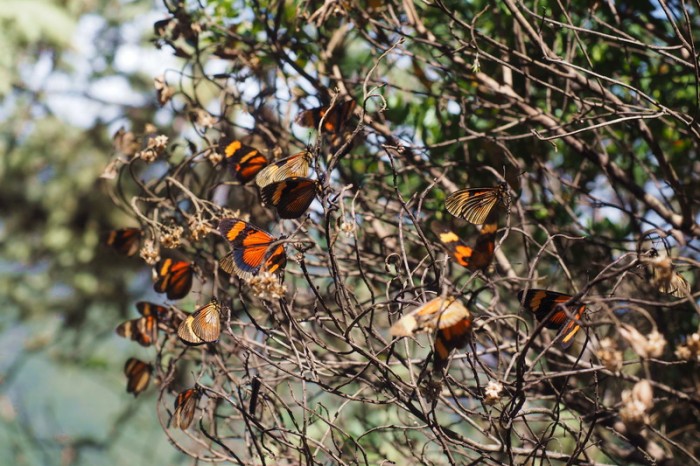
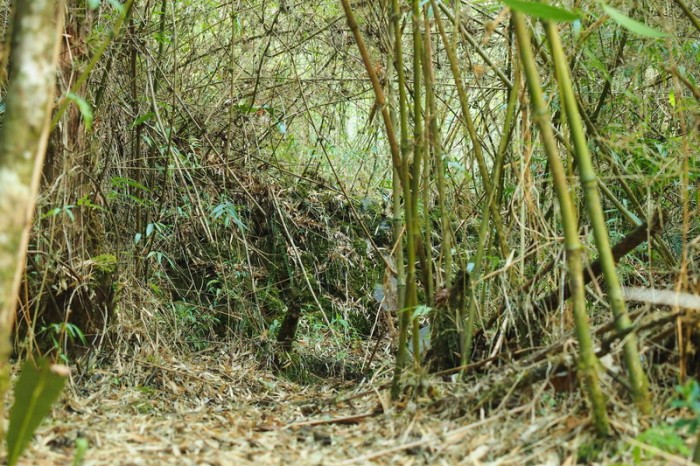
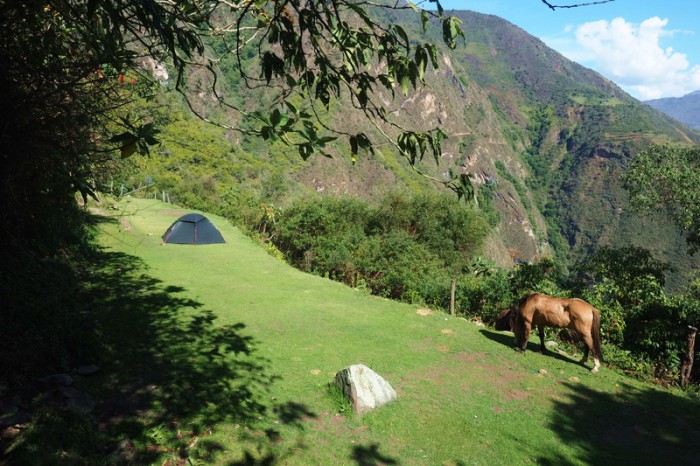
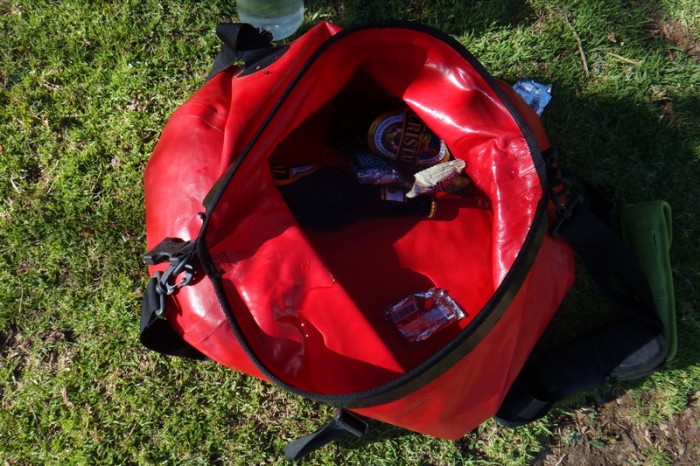
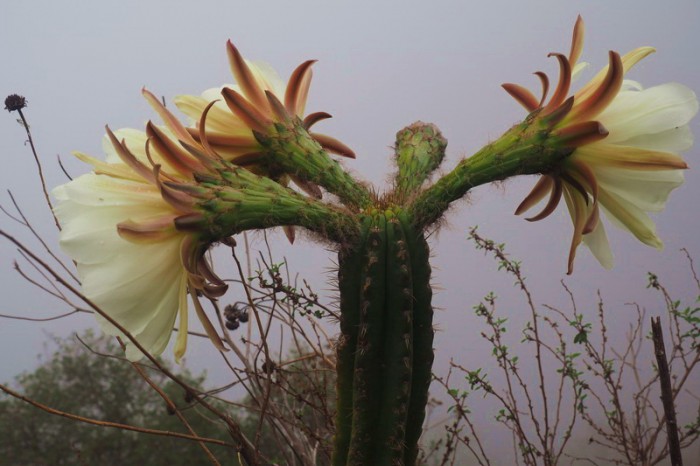
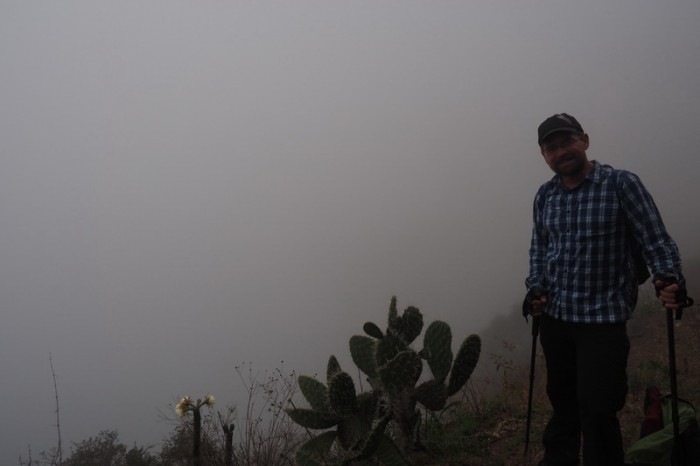
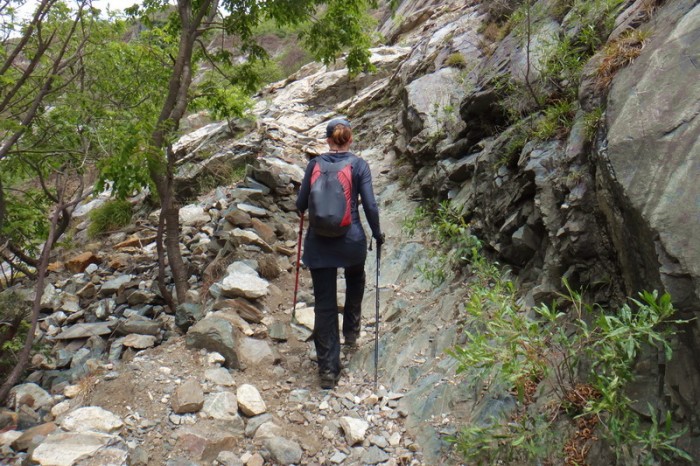
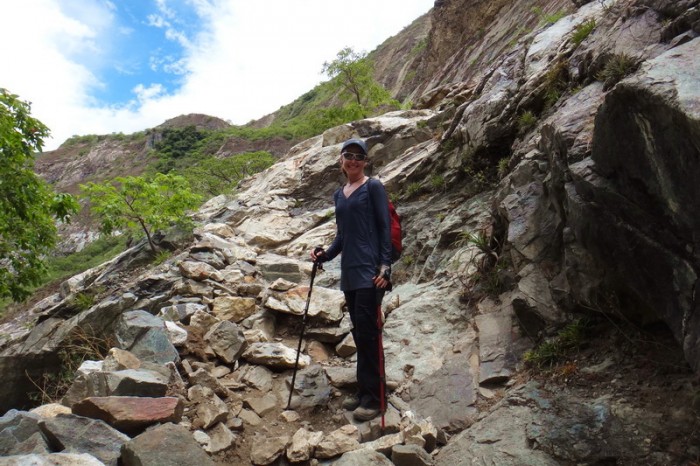
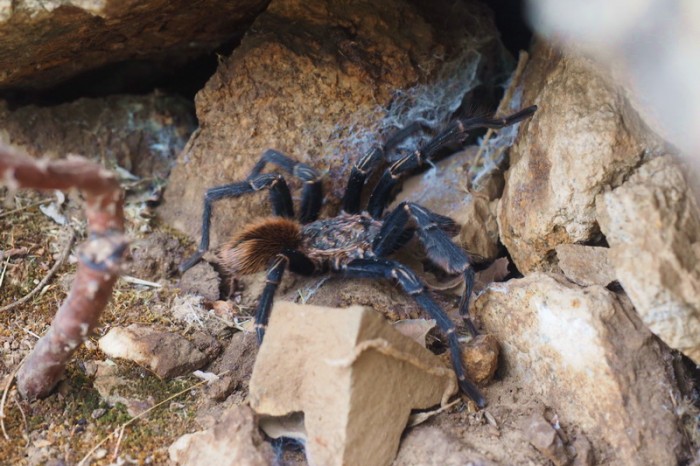
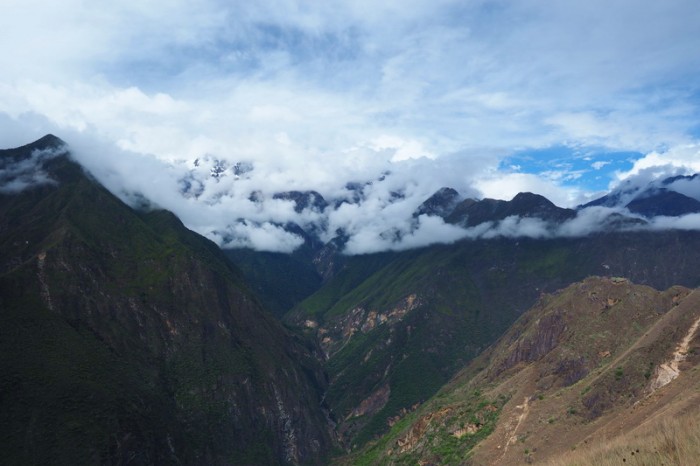
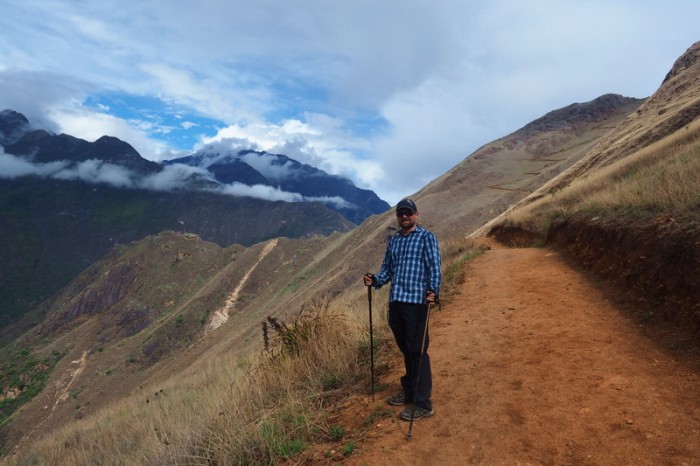
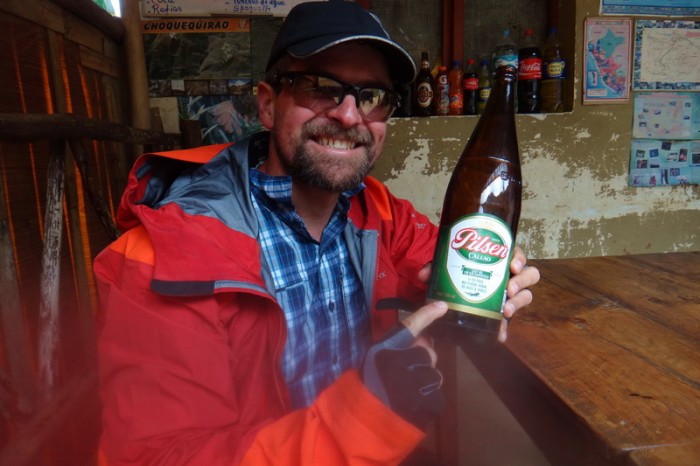
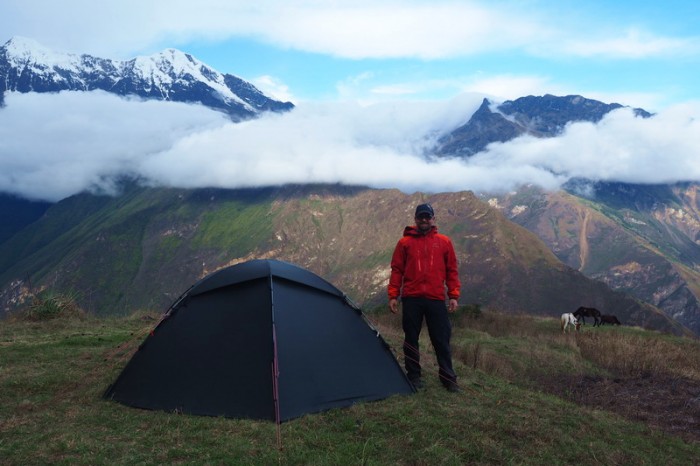
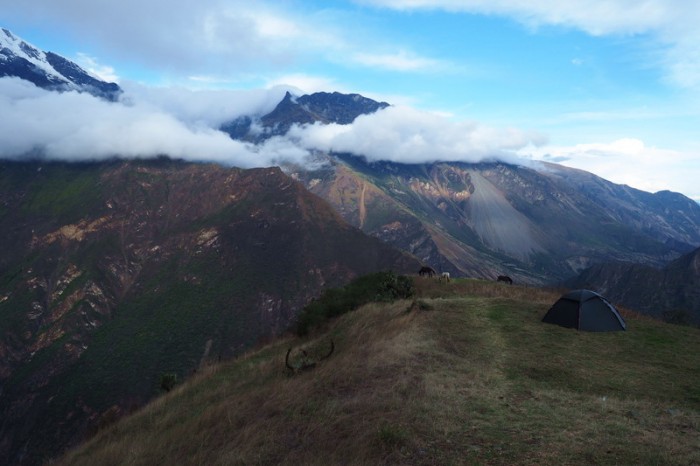
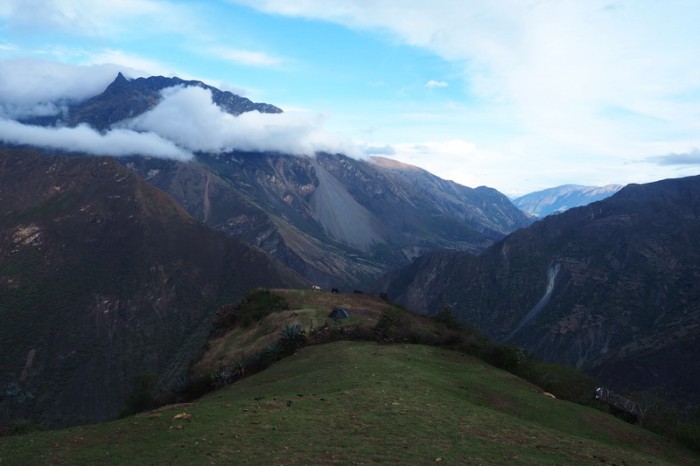
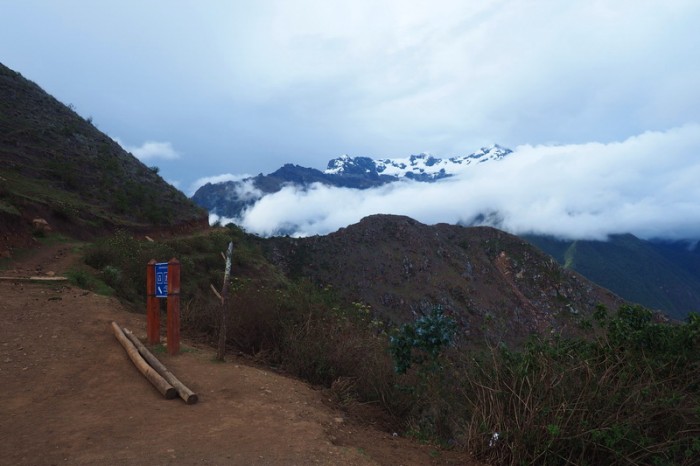
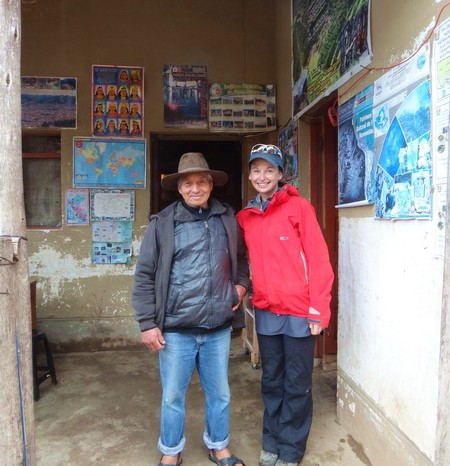
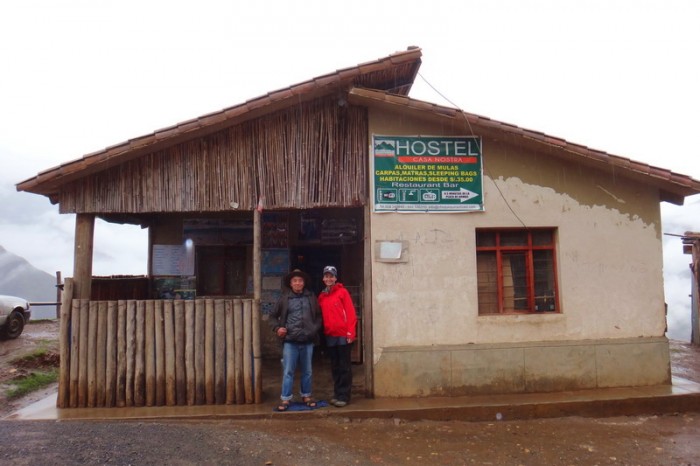
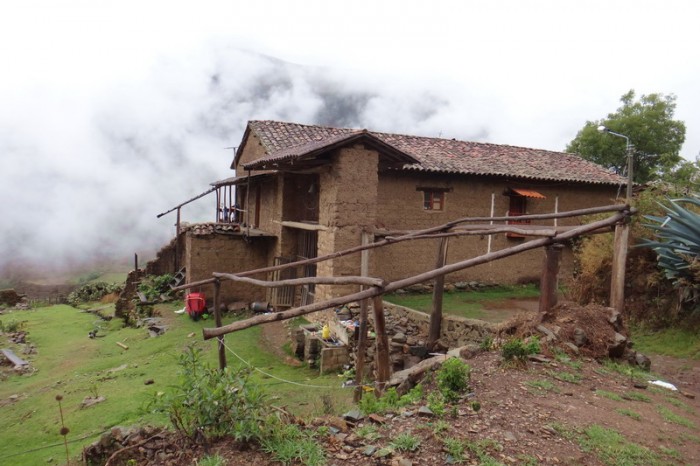
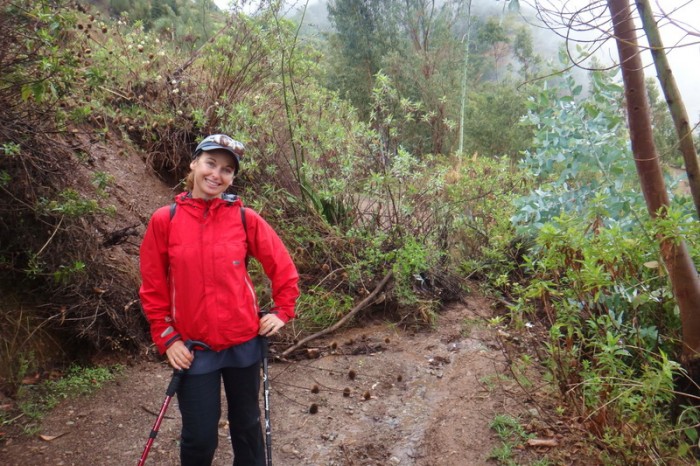
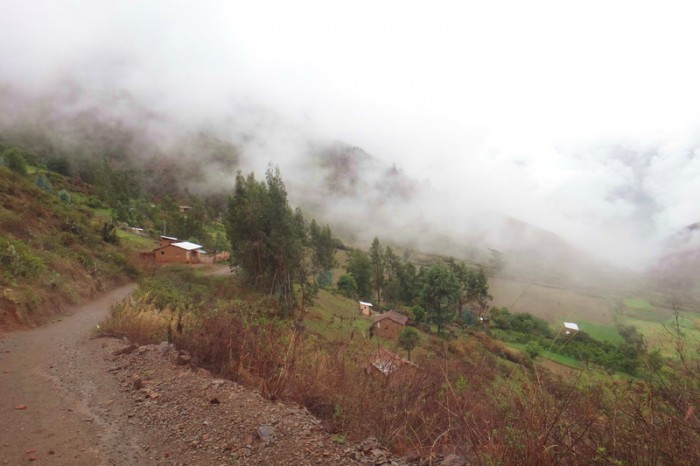
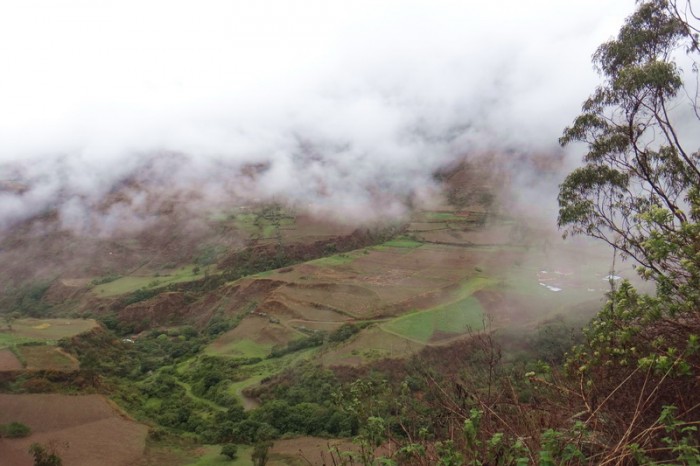
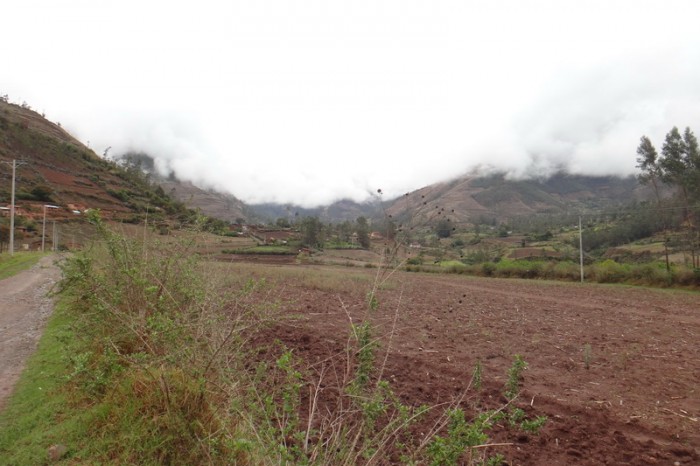
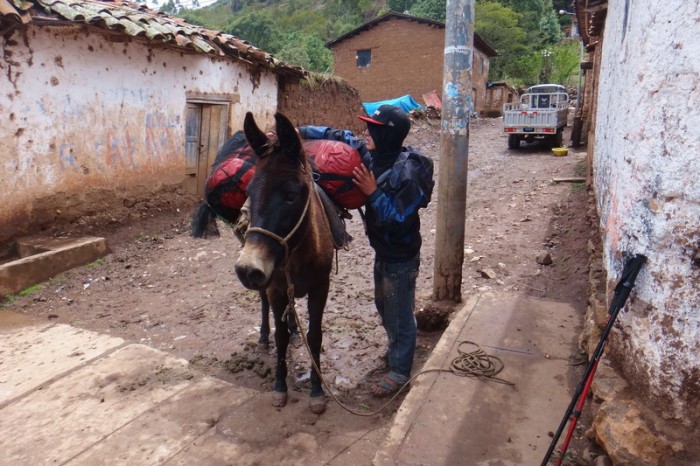
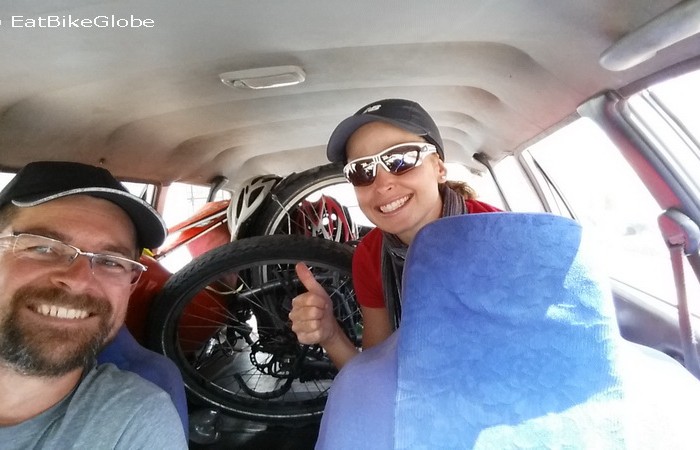





















Recent Comments